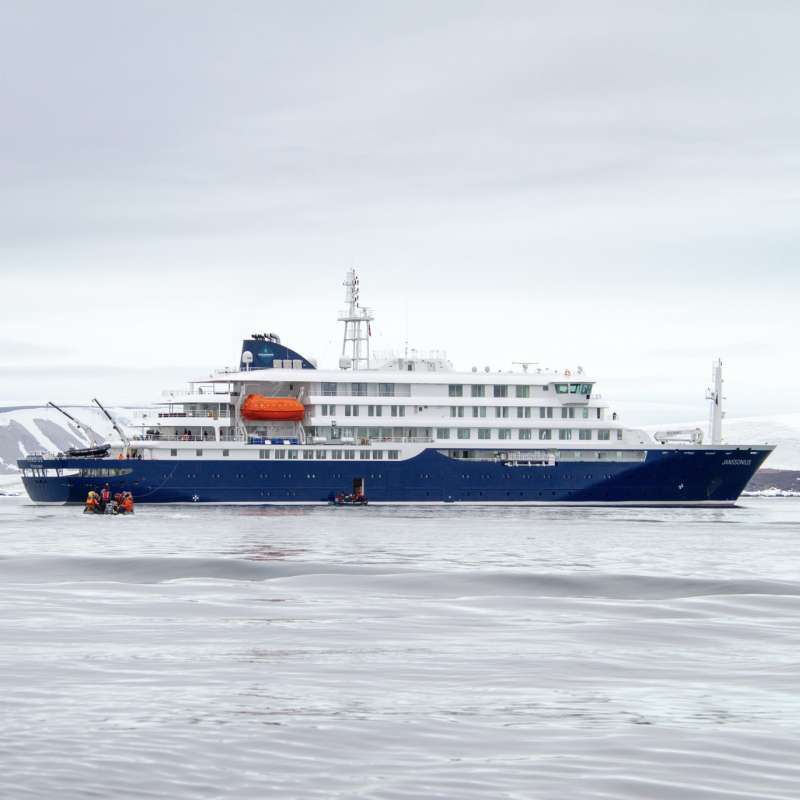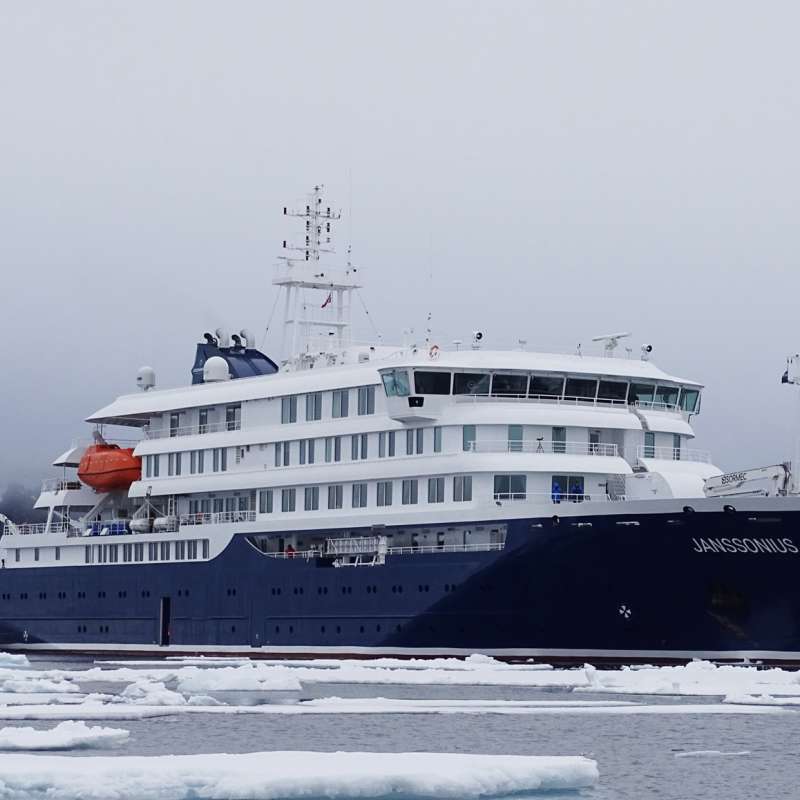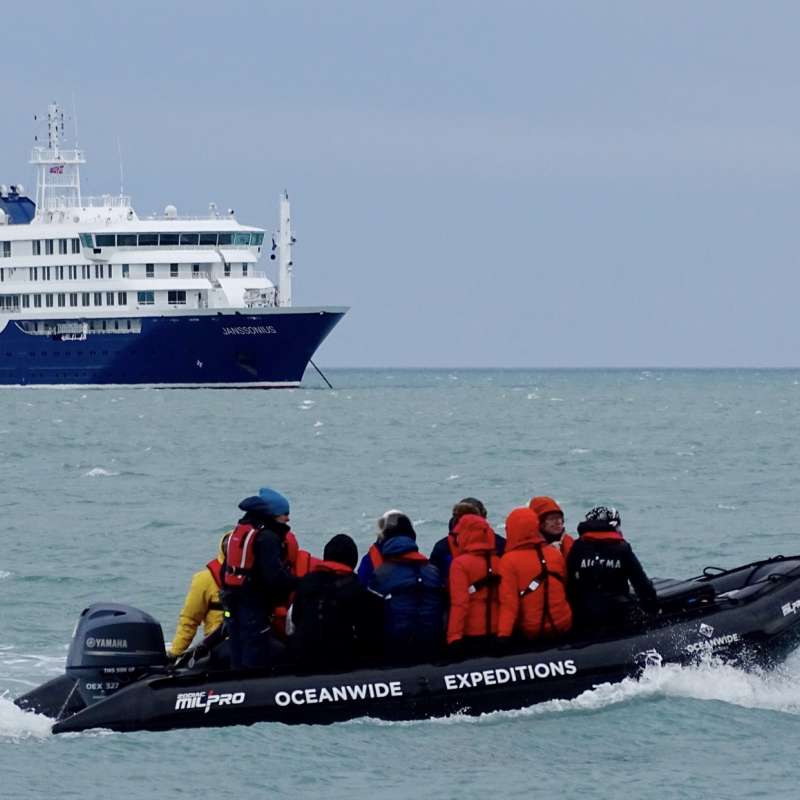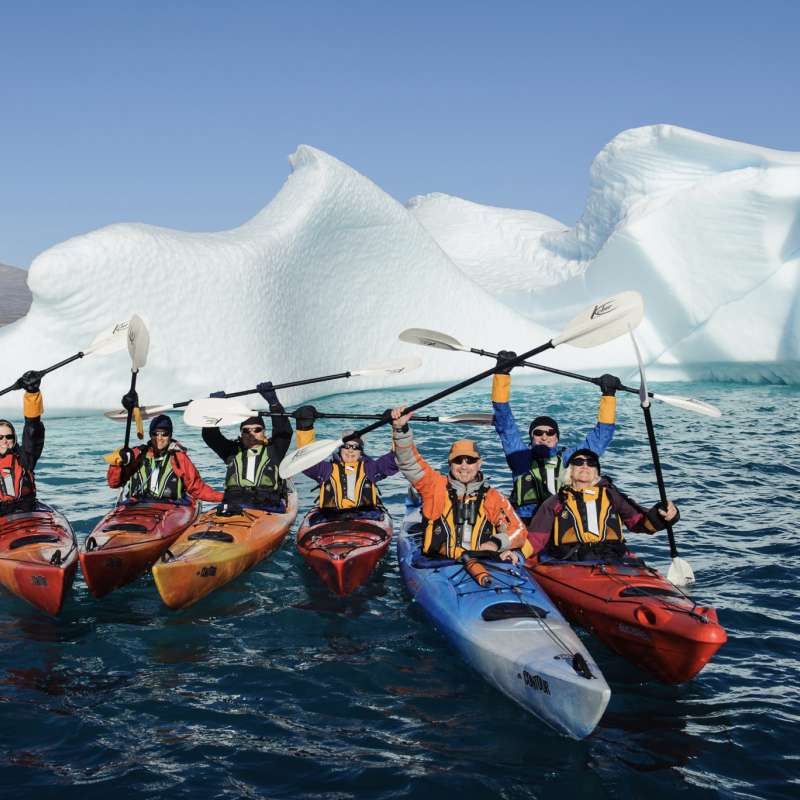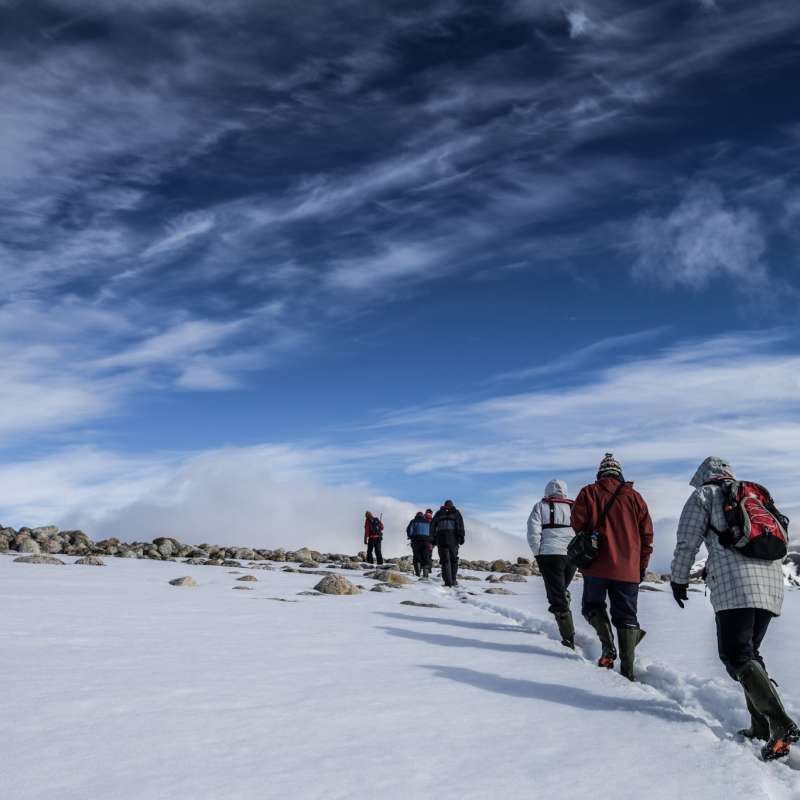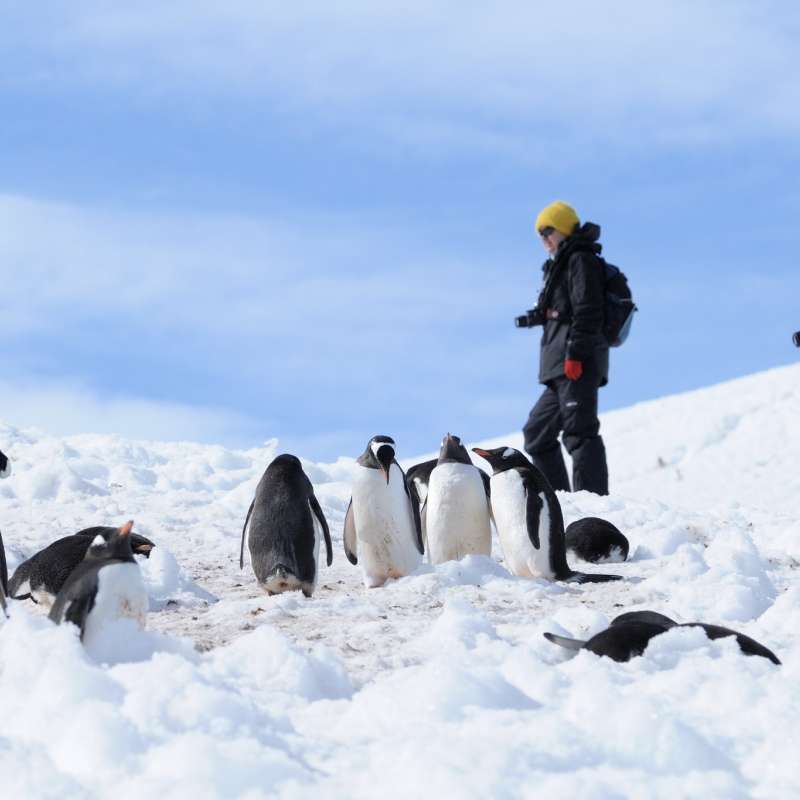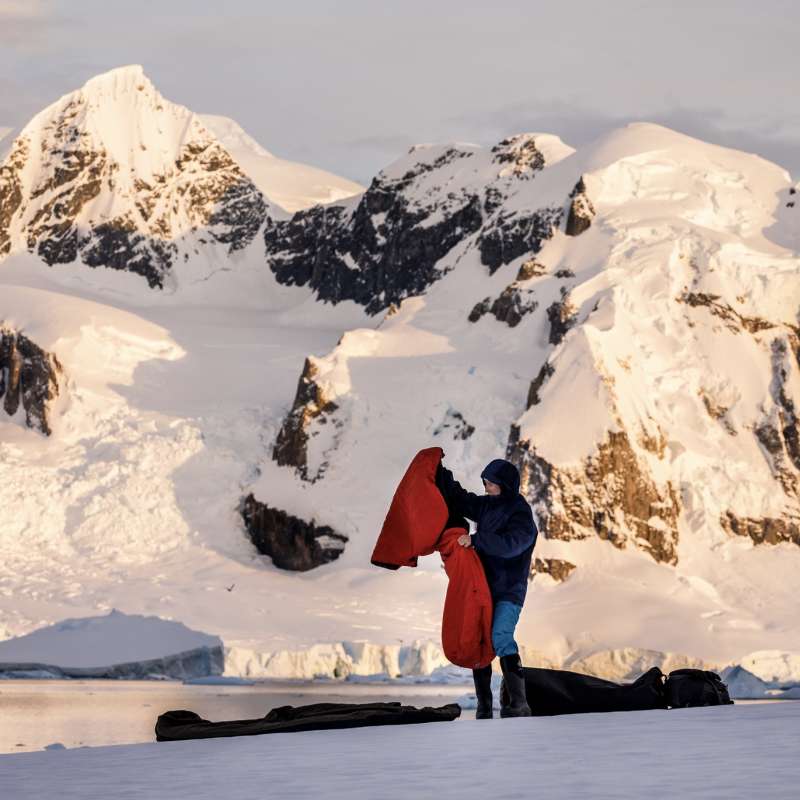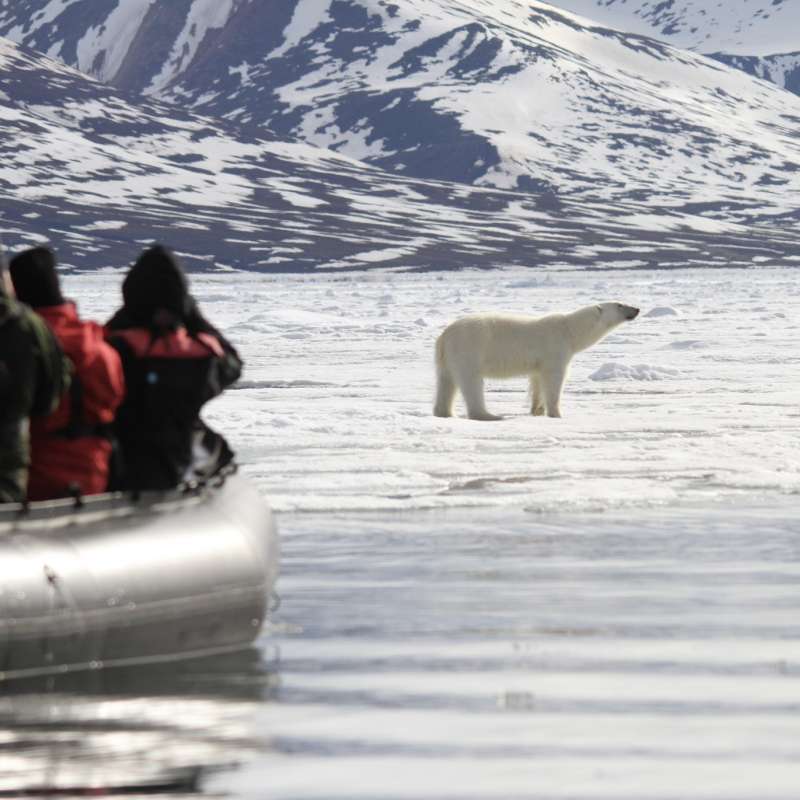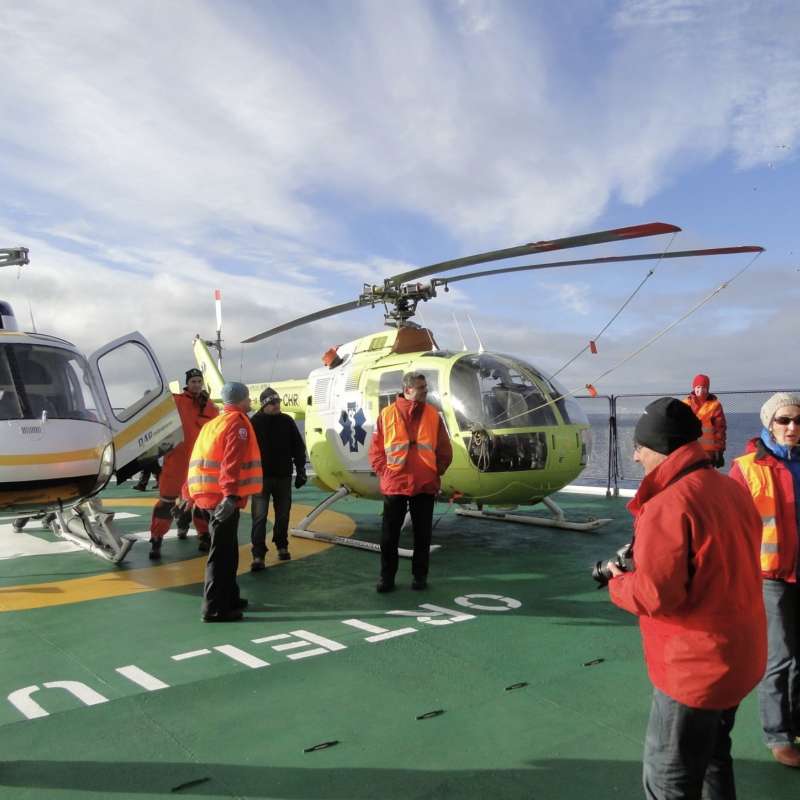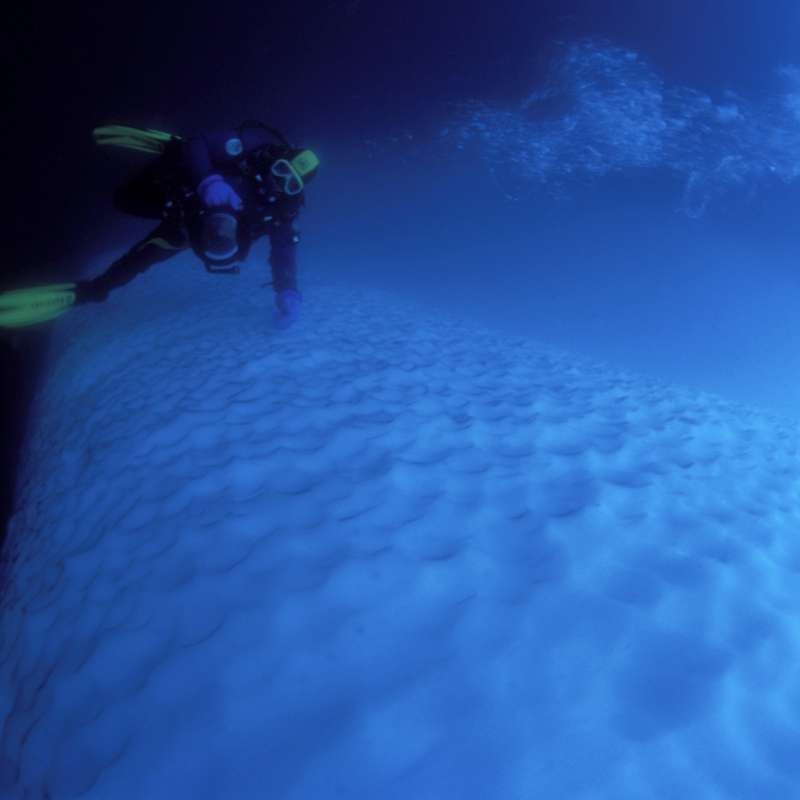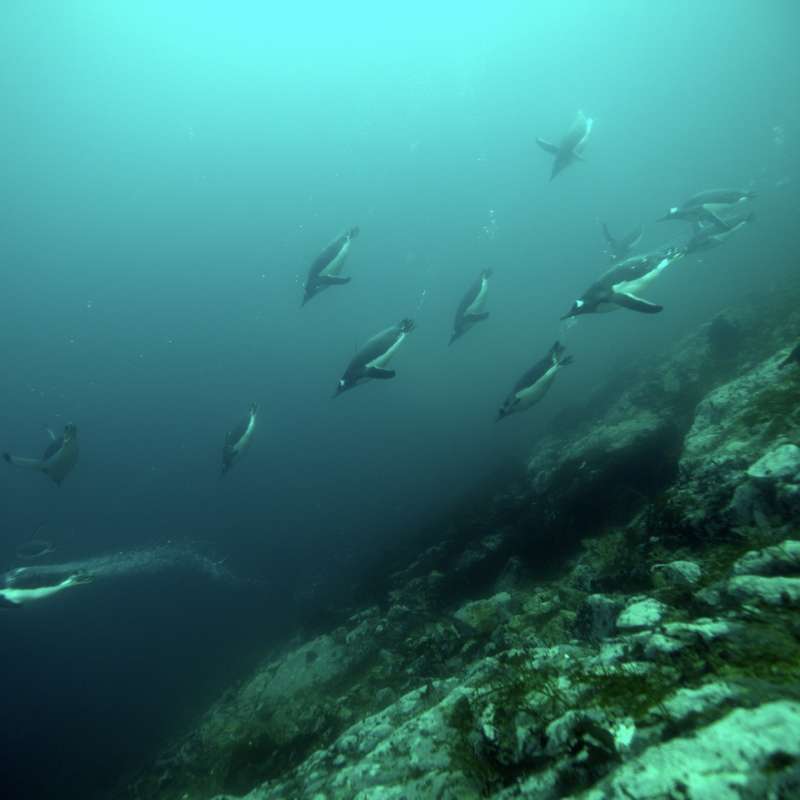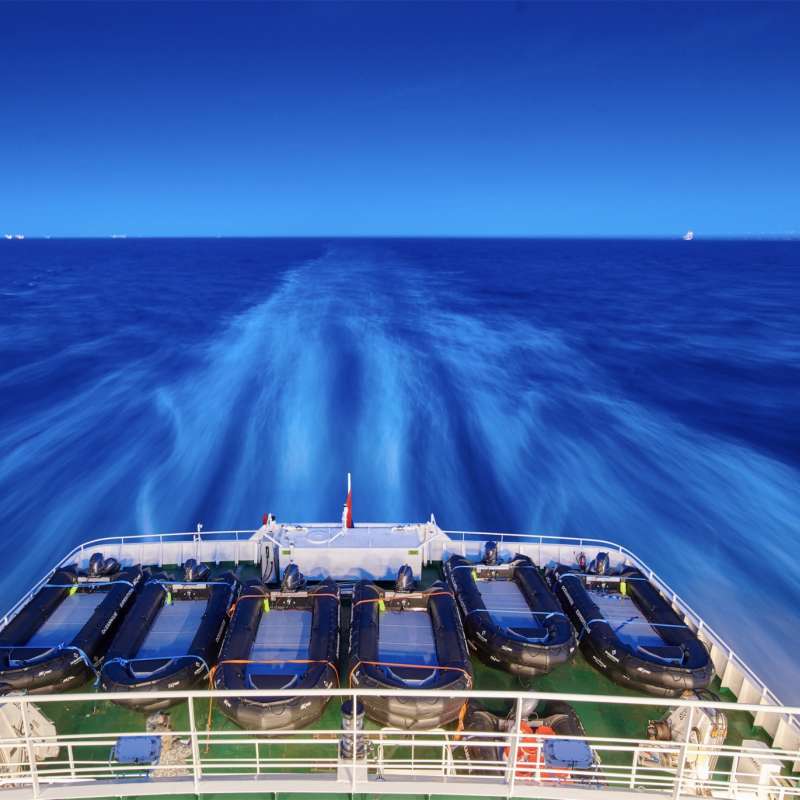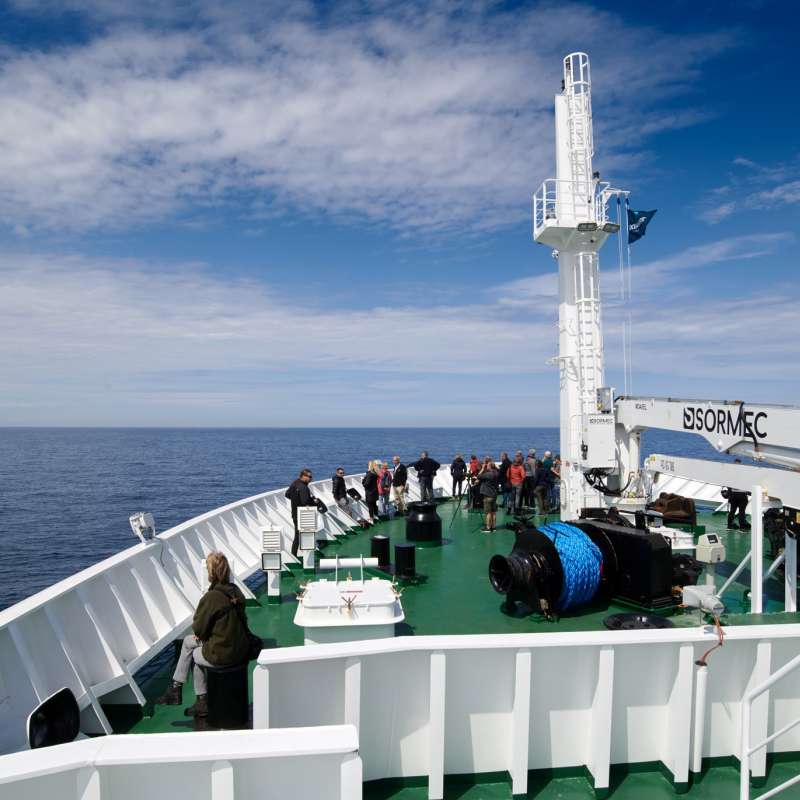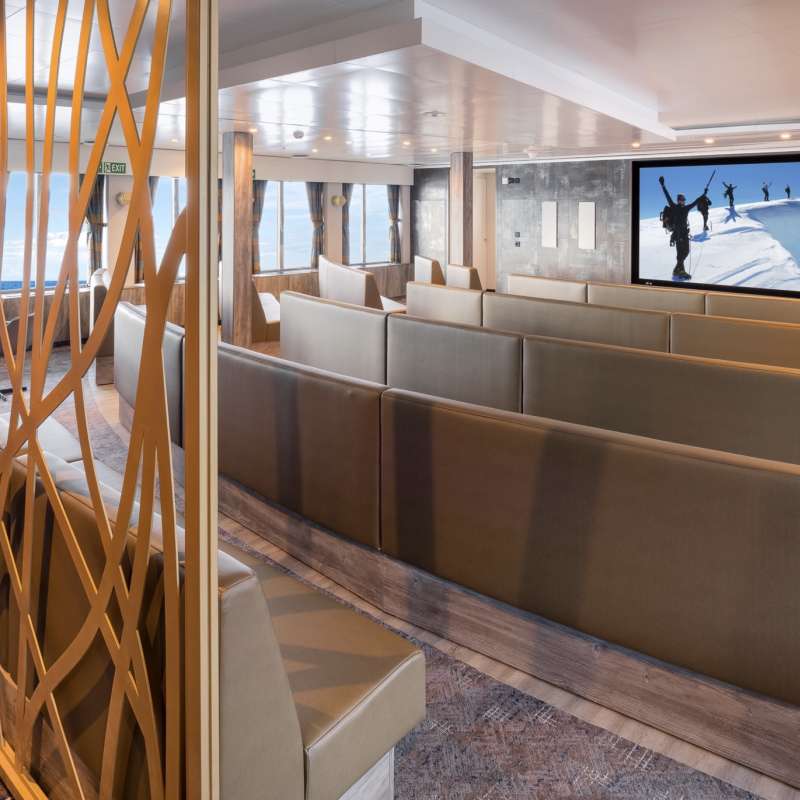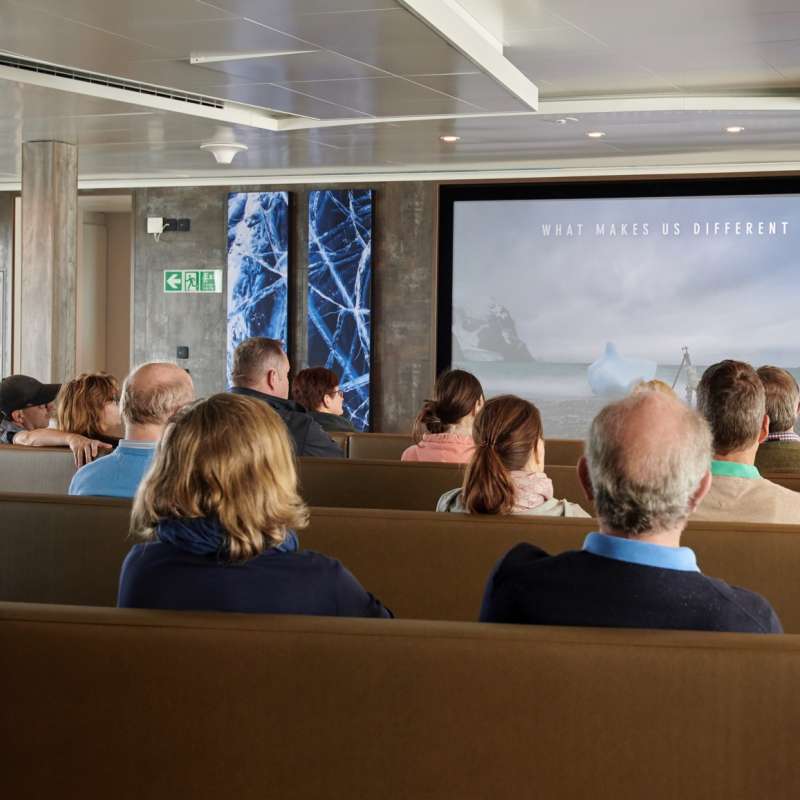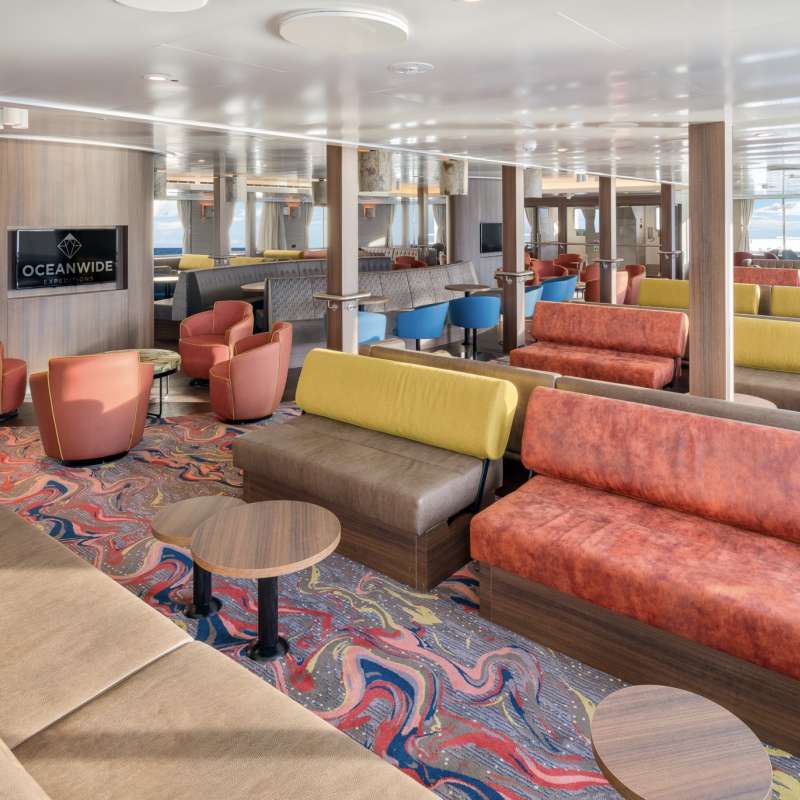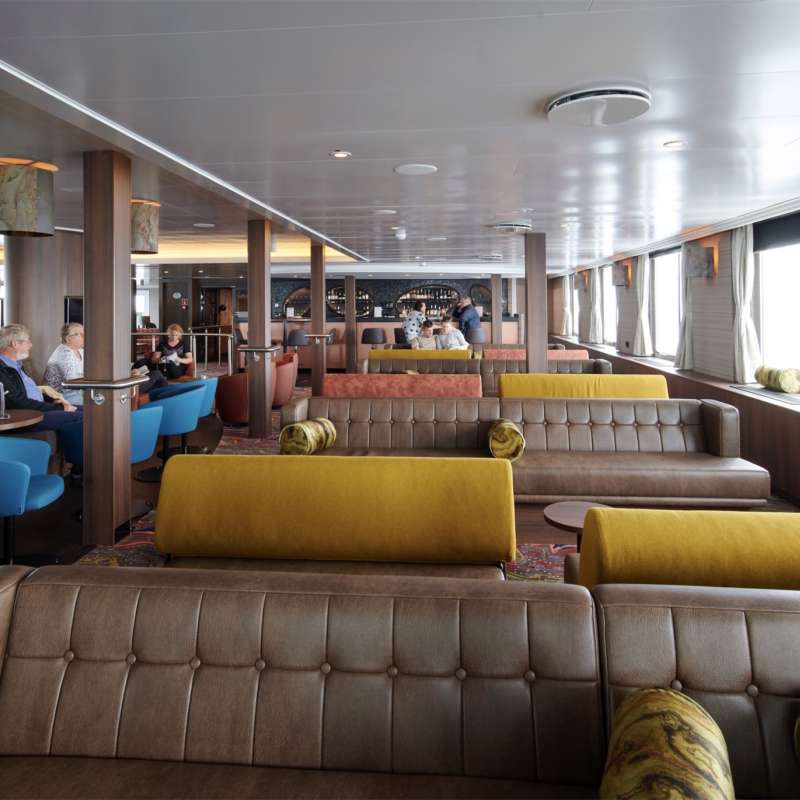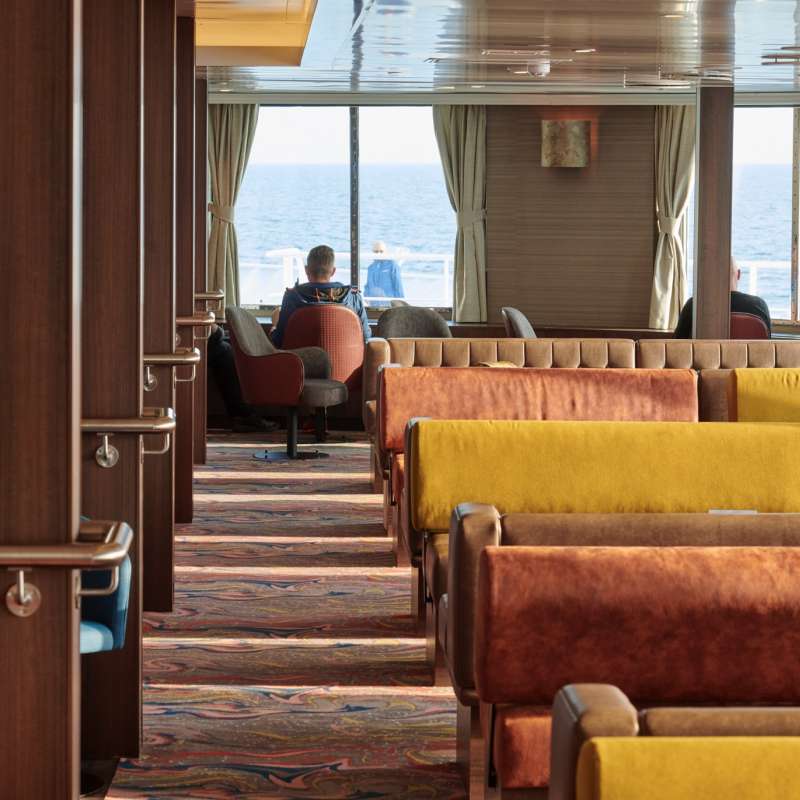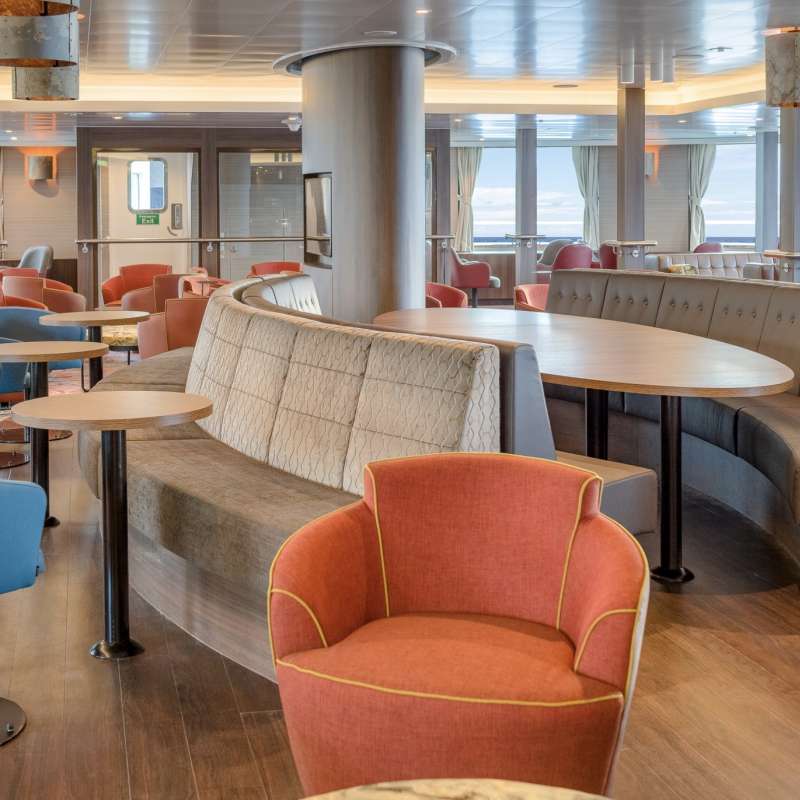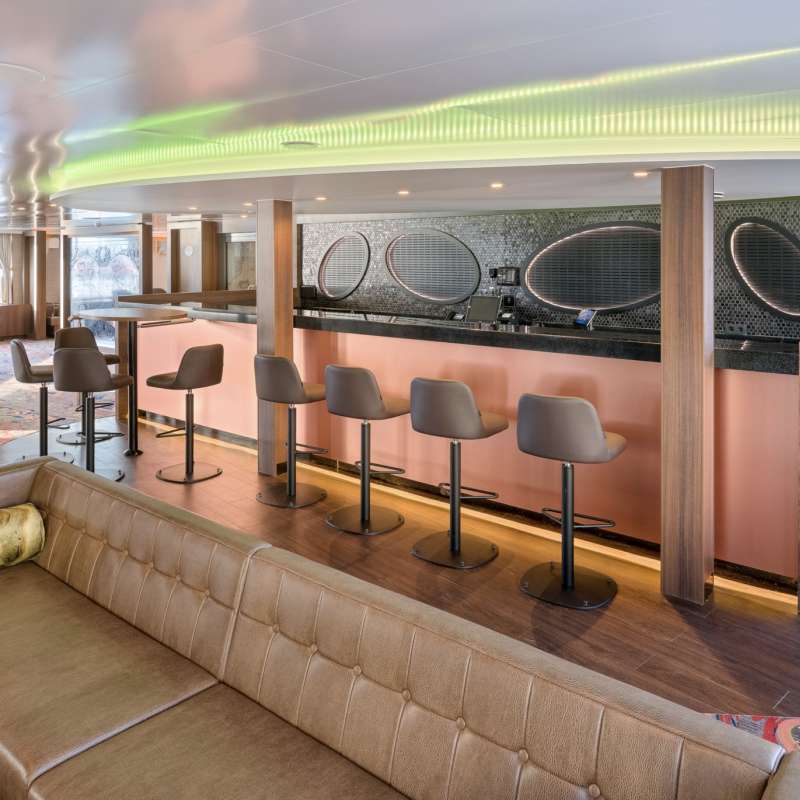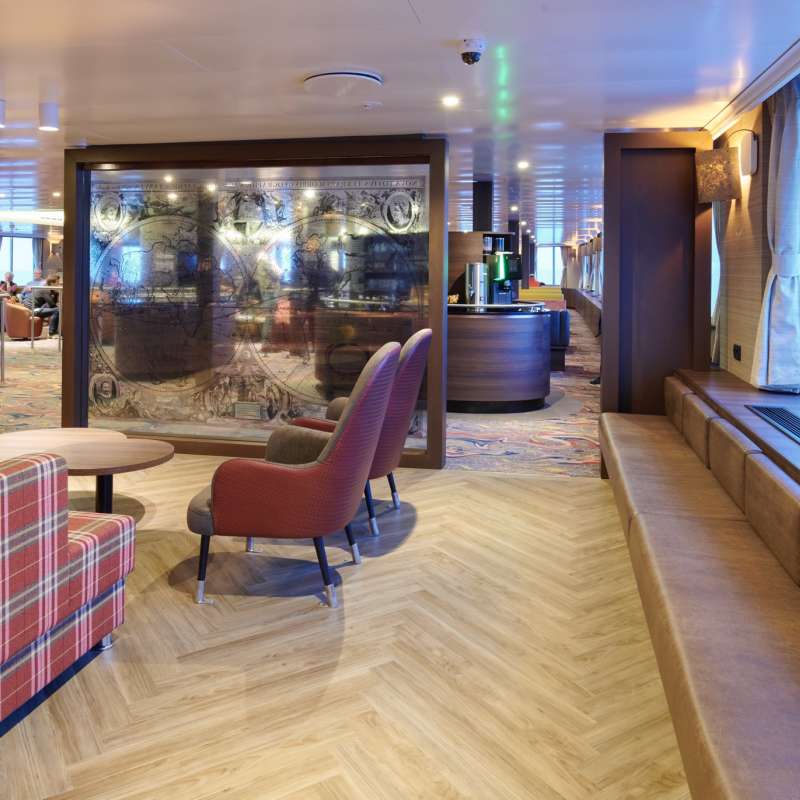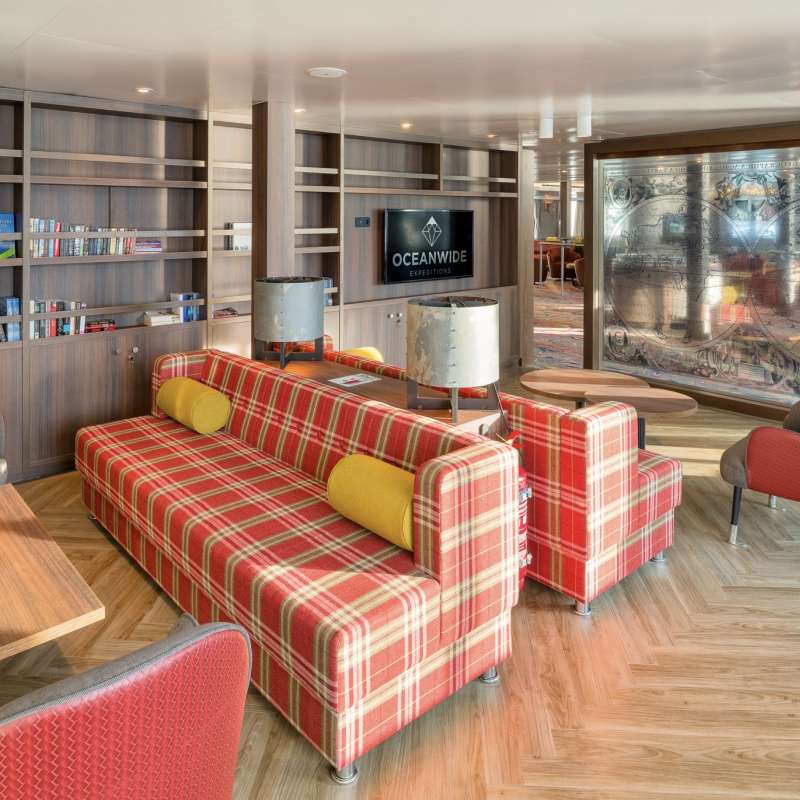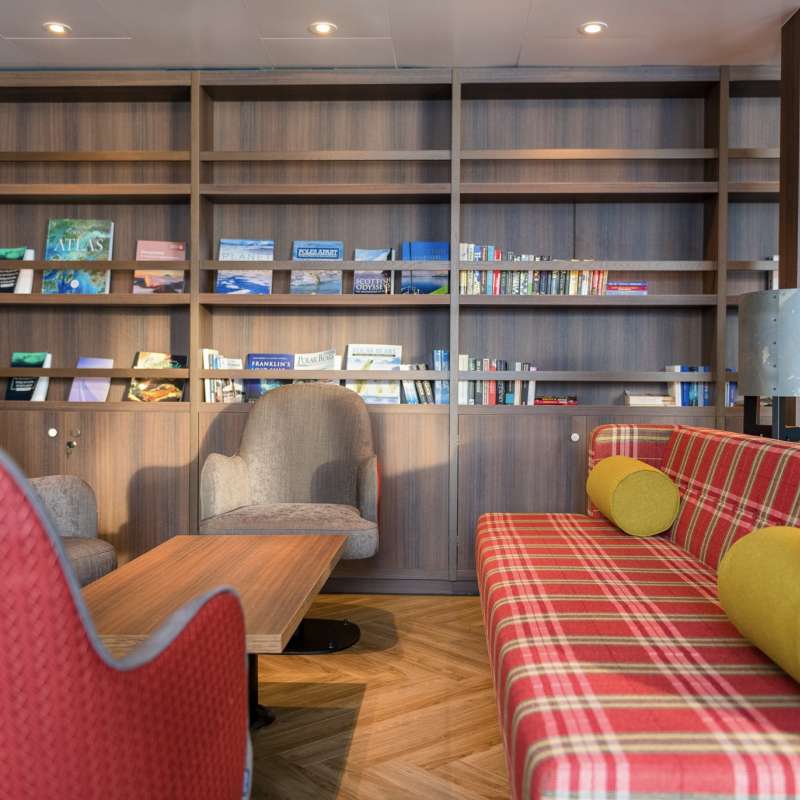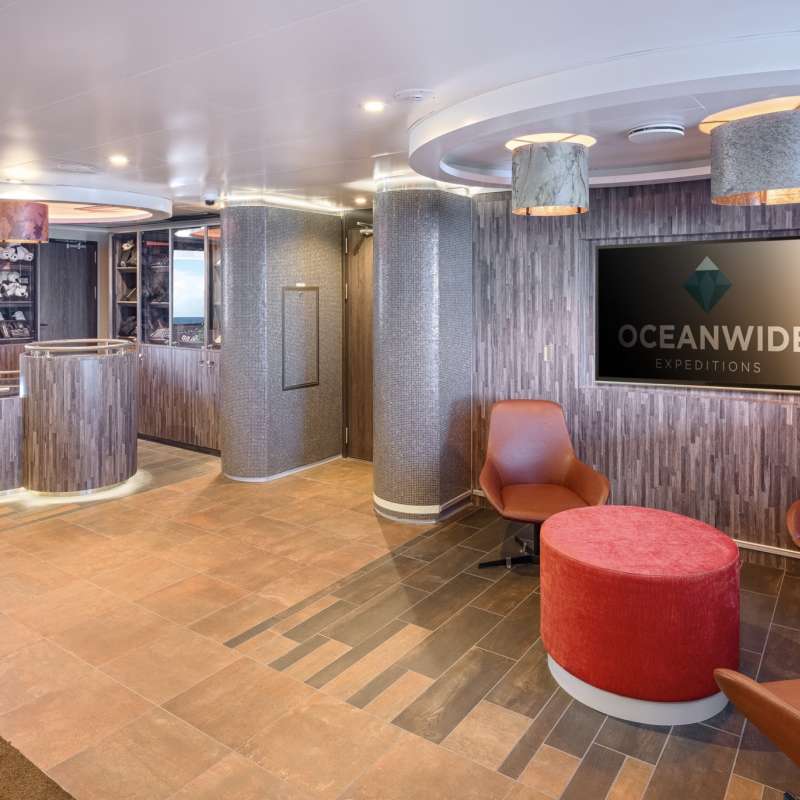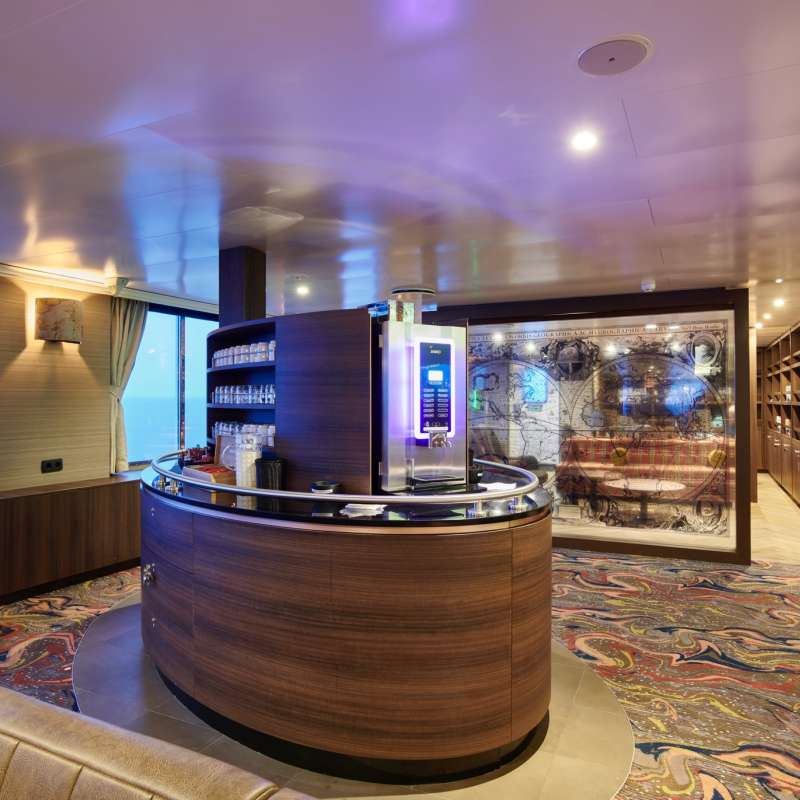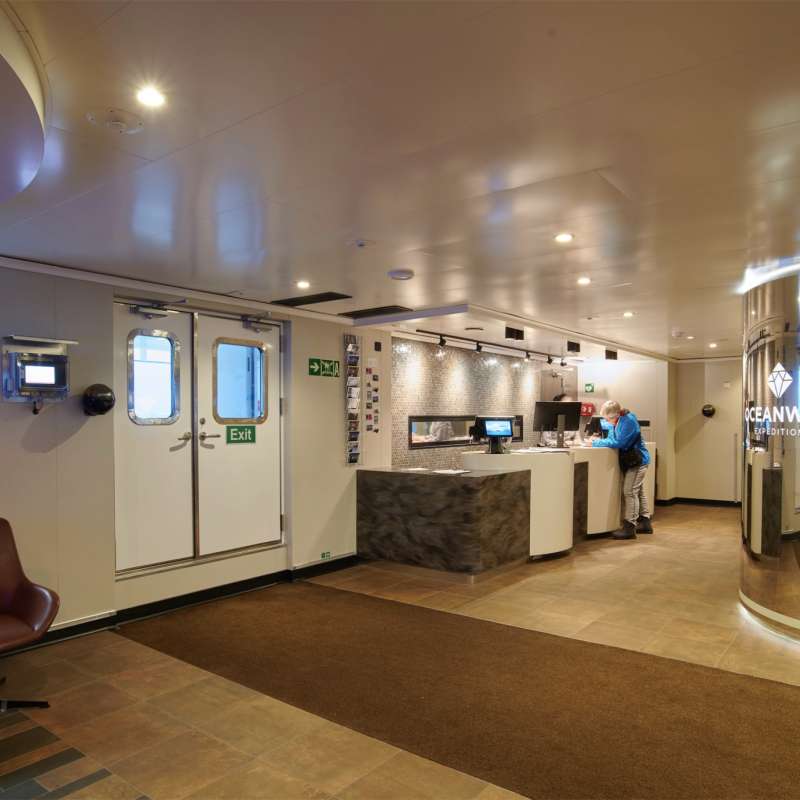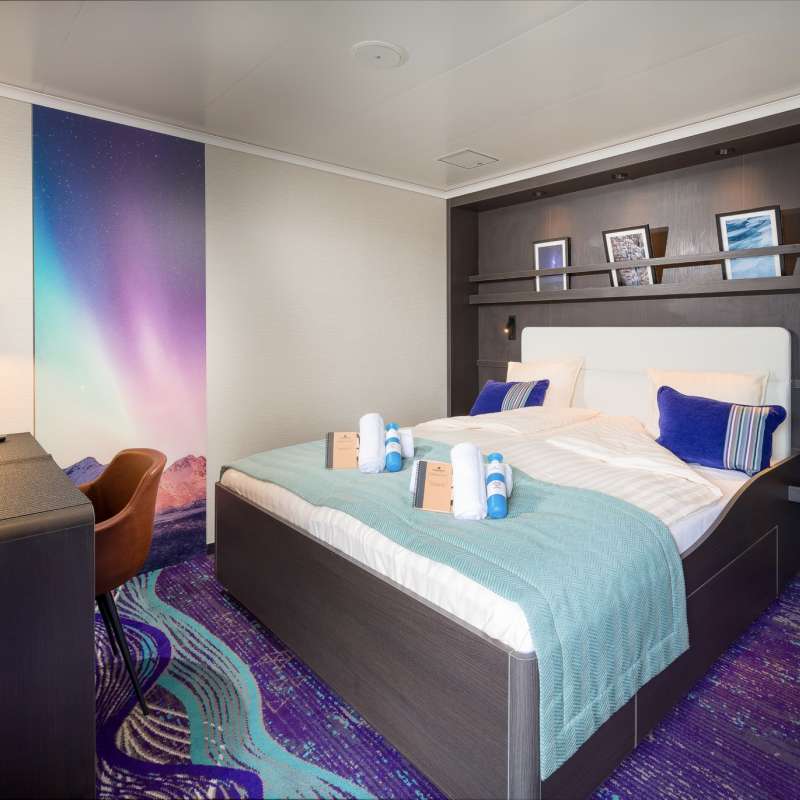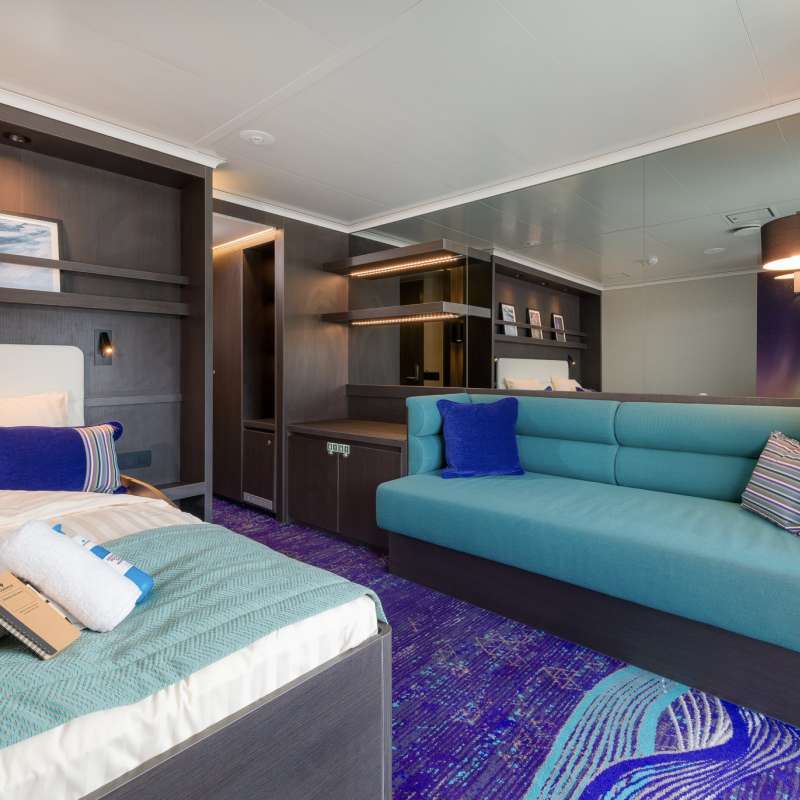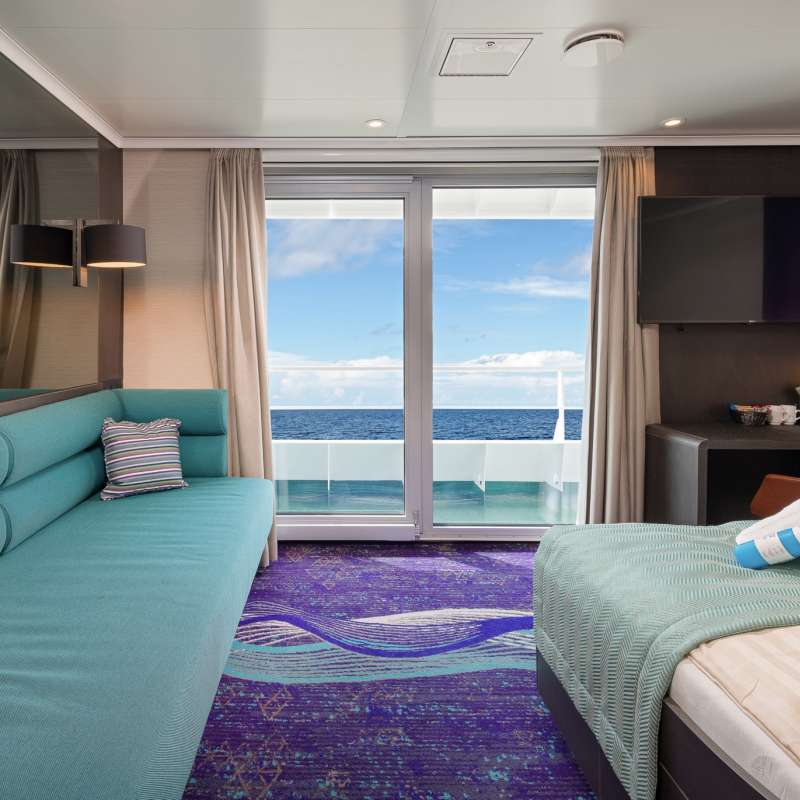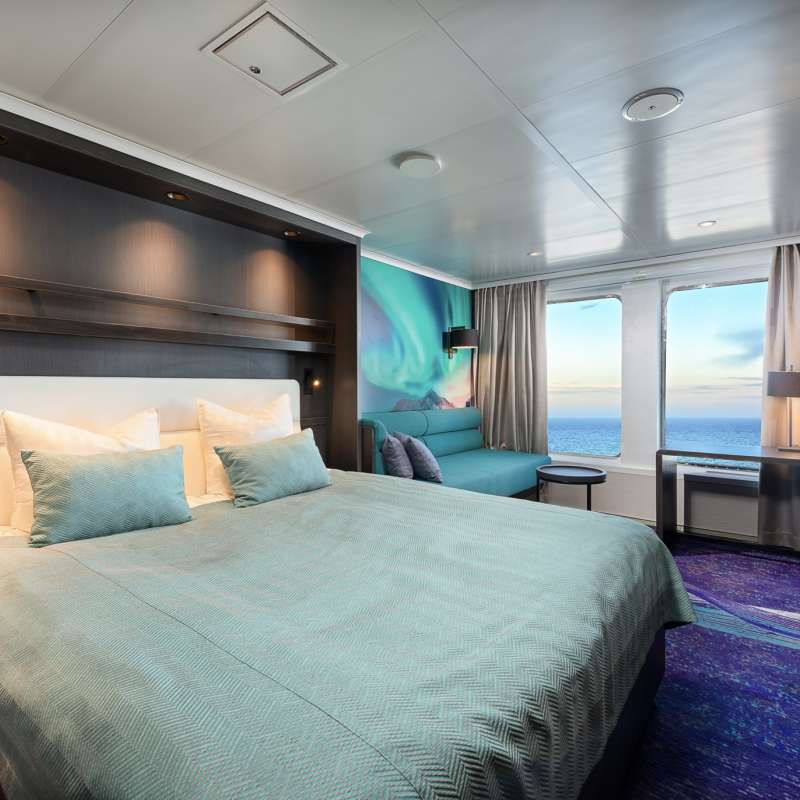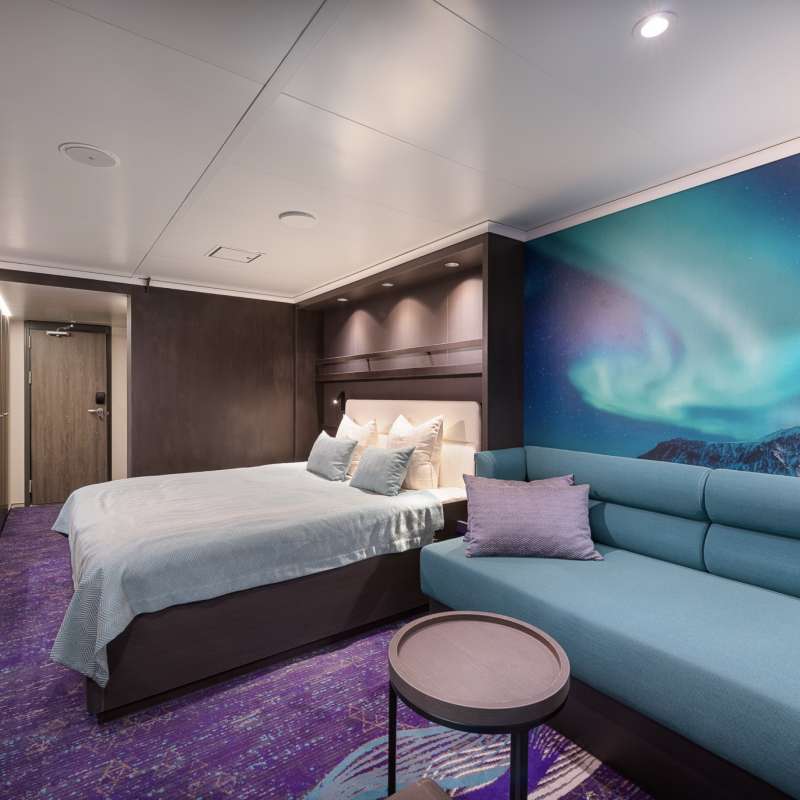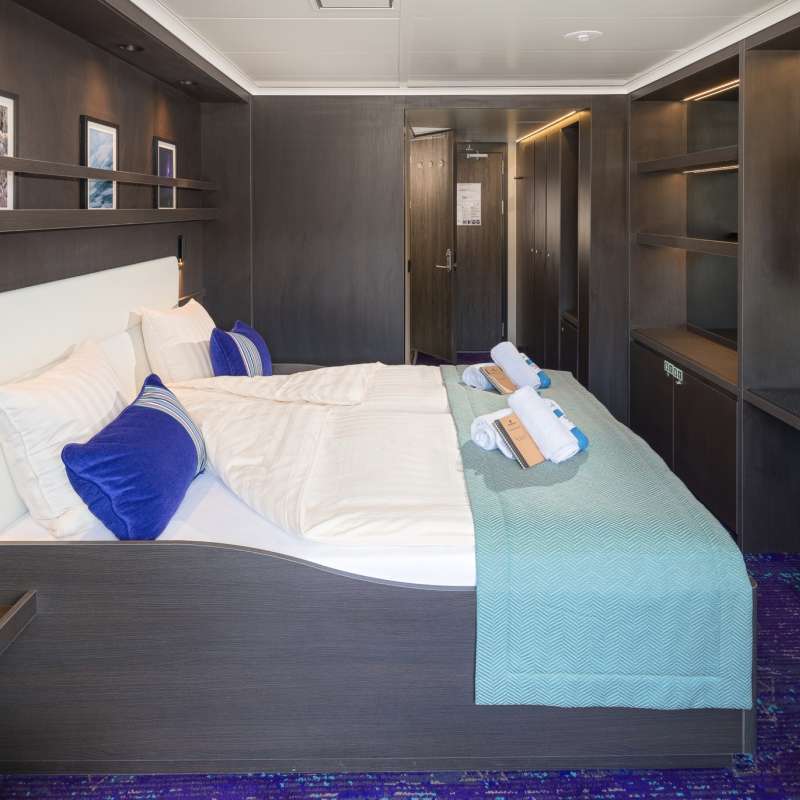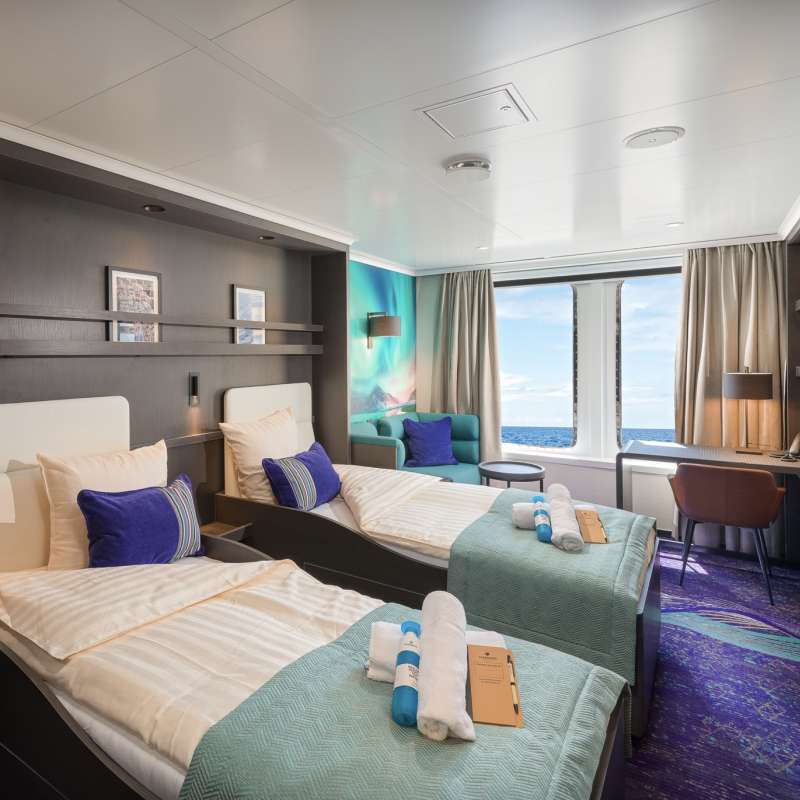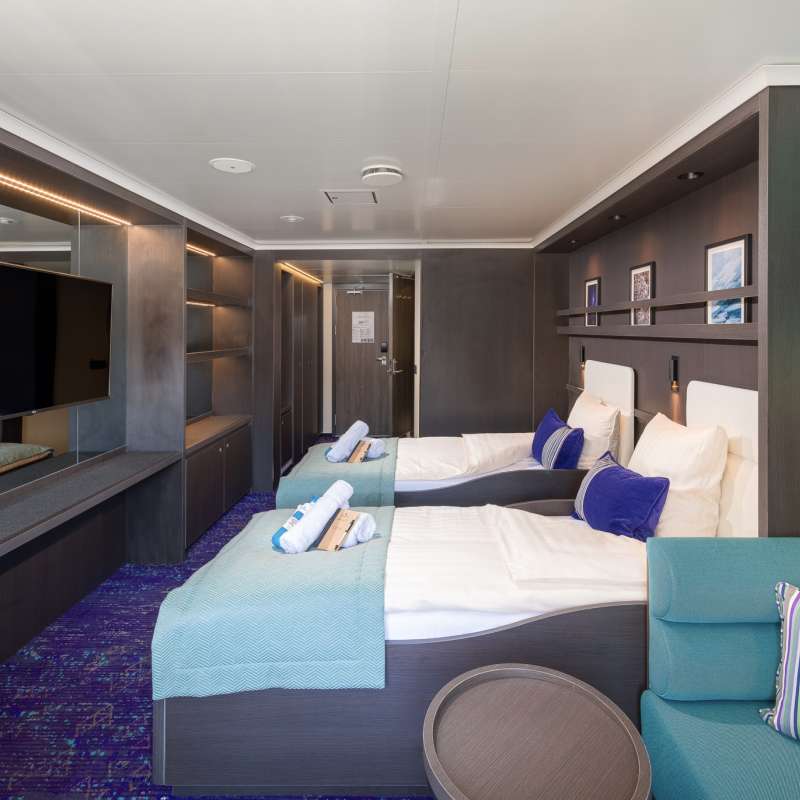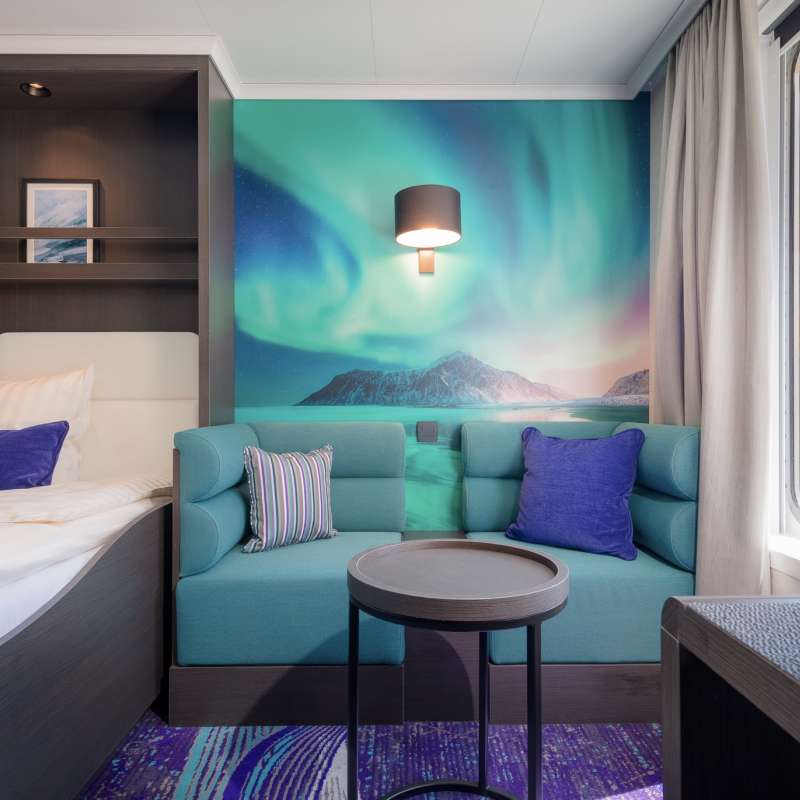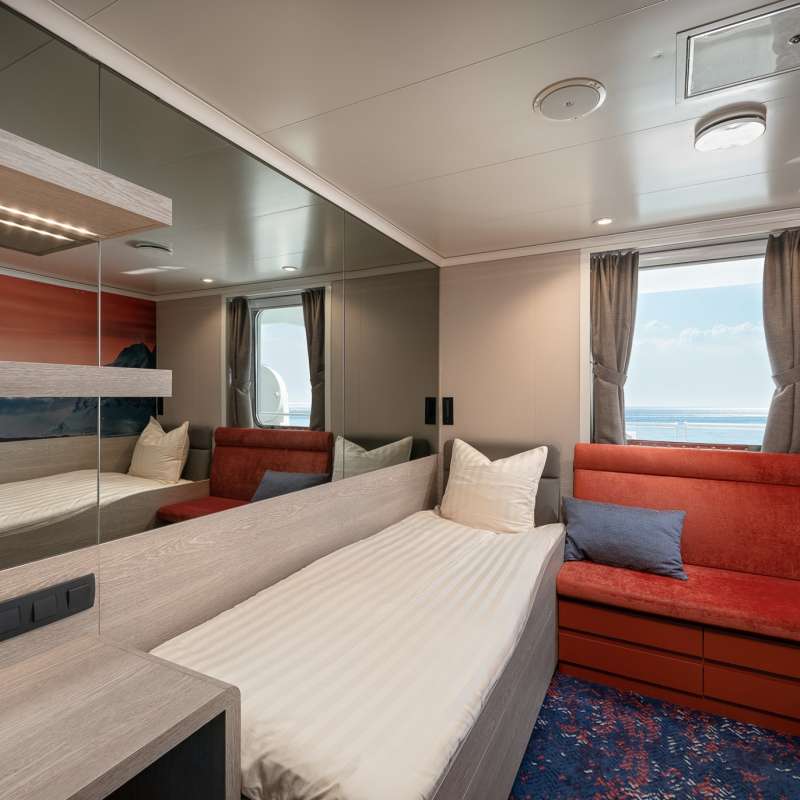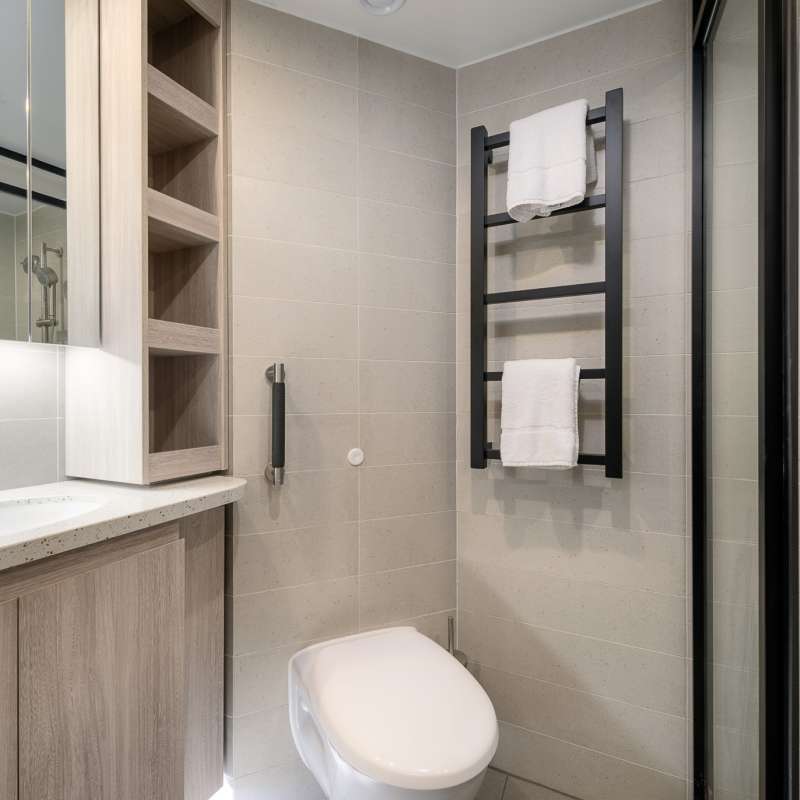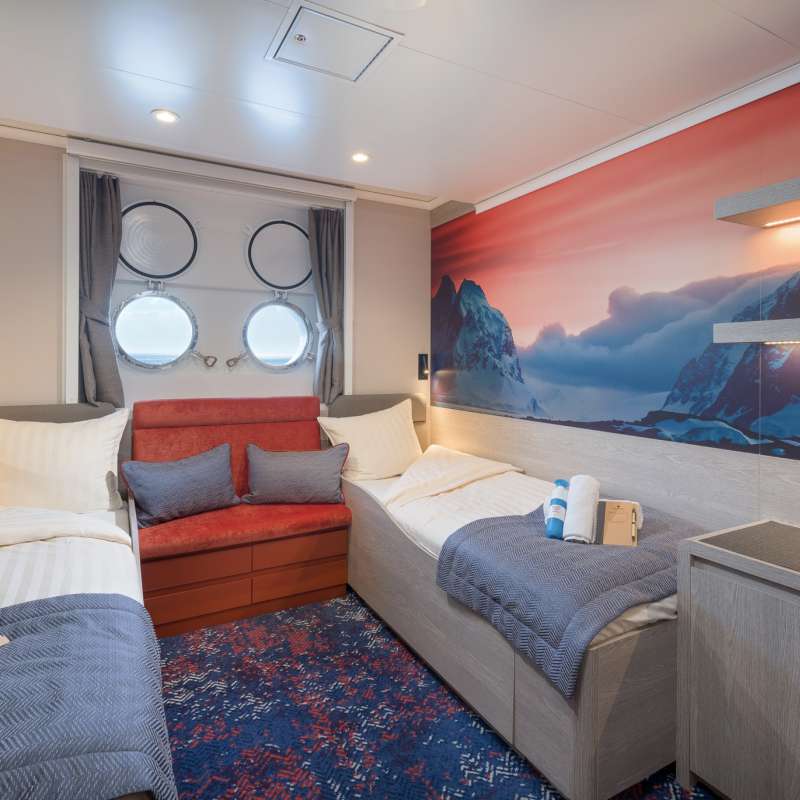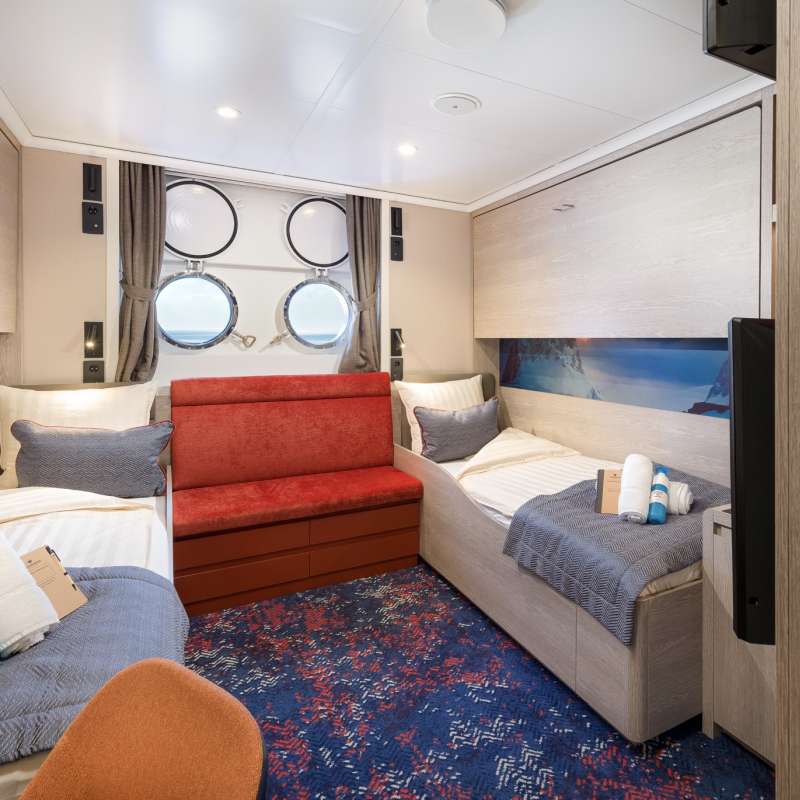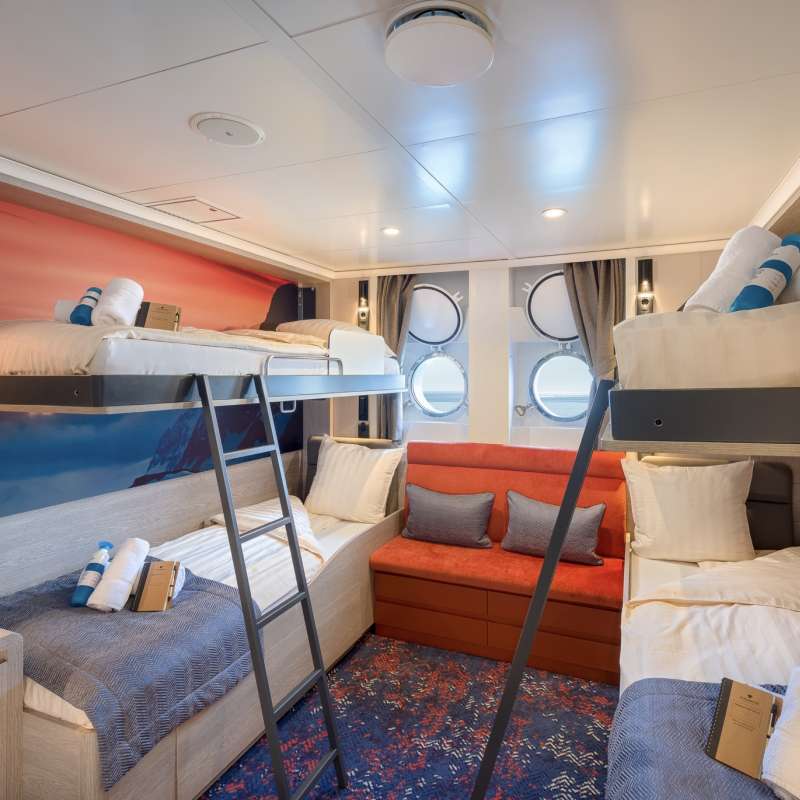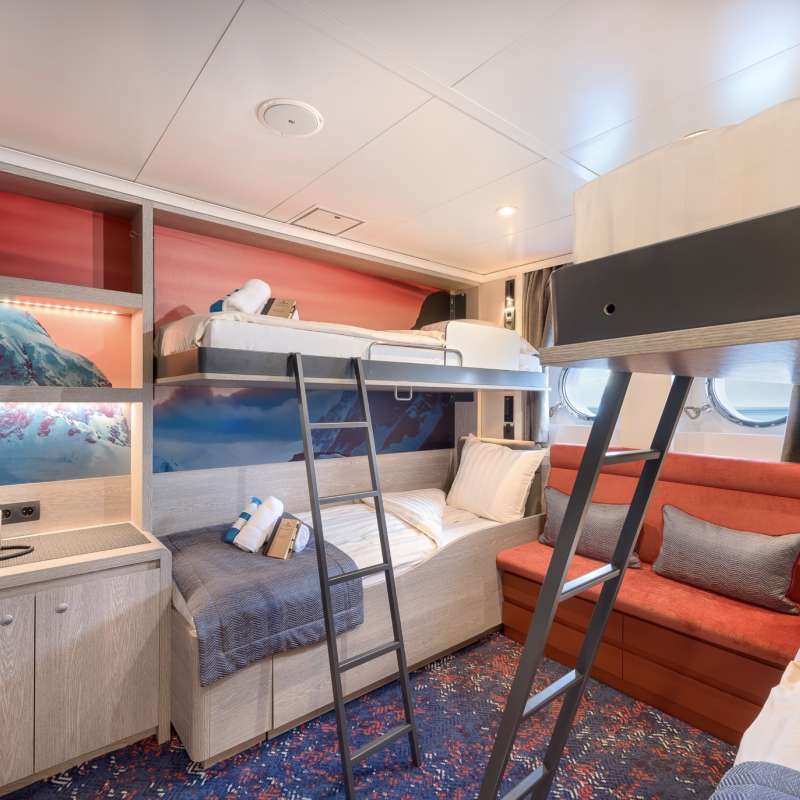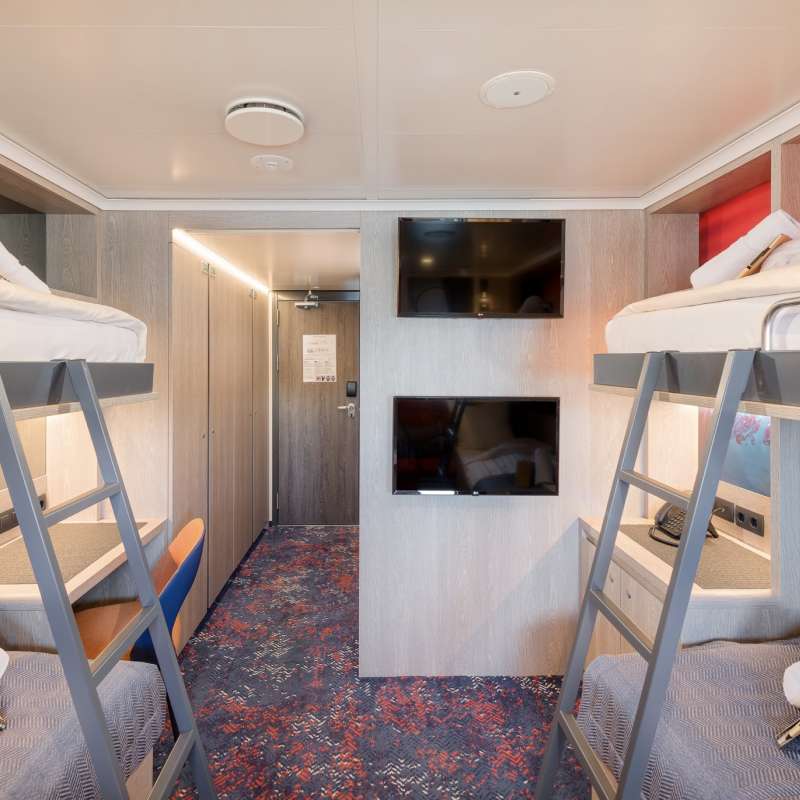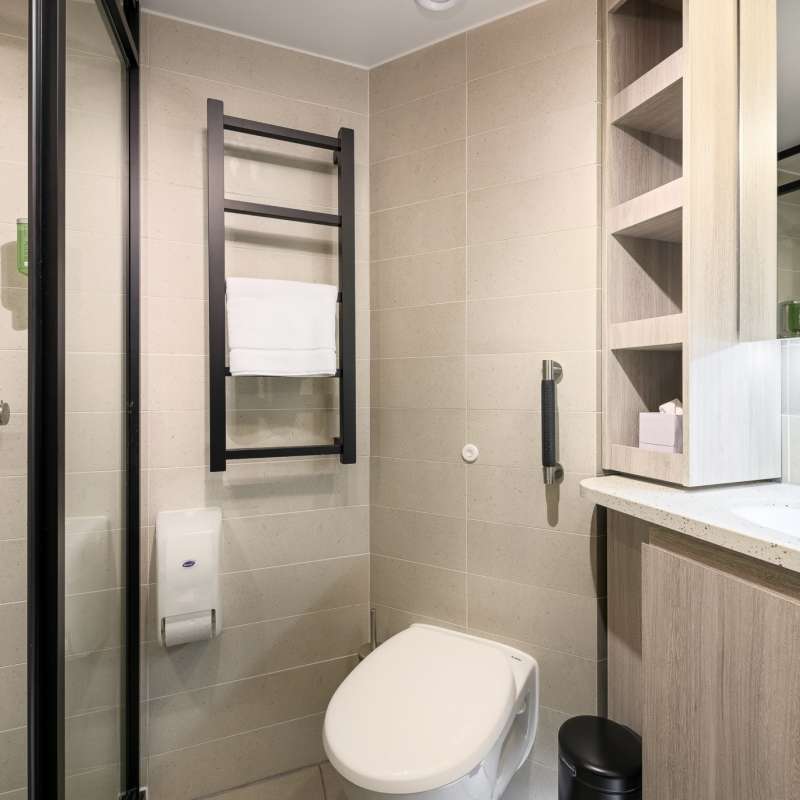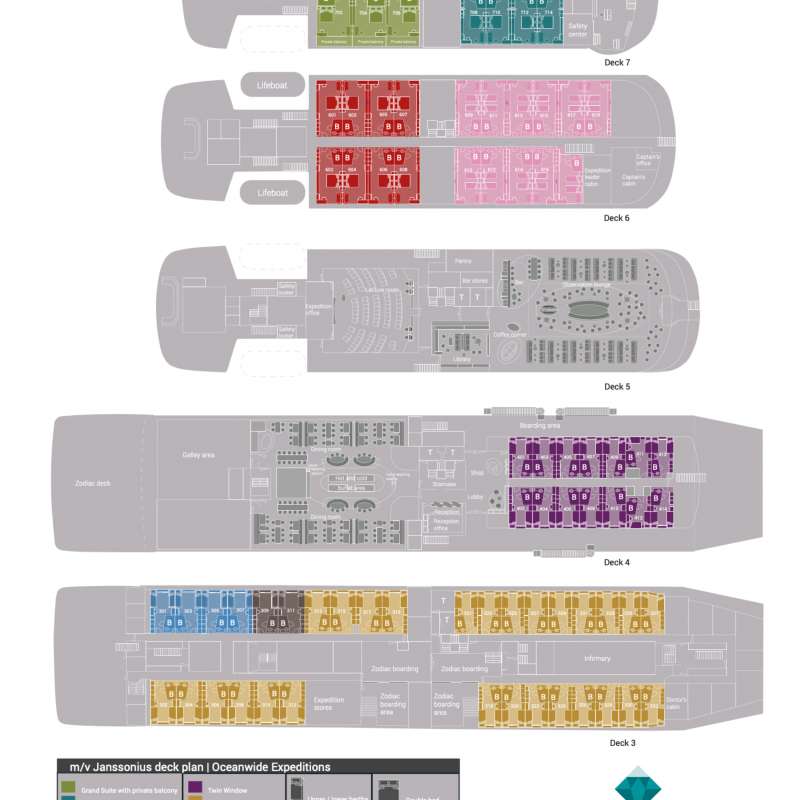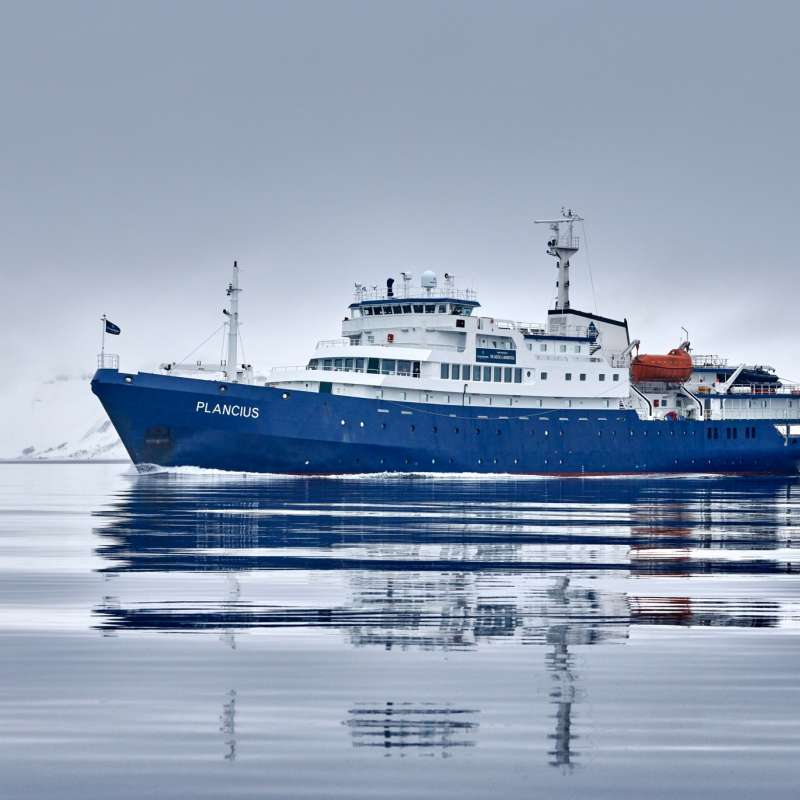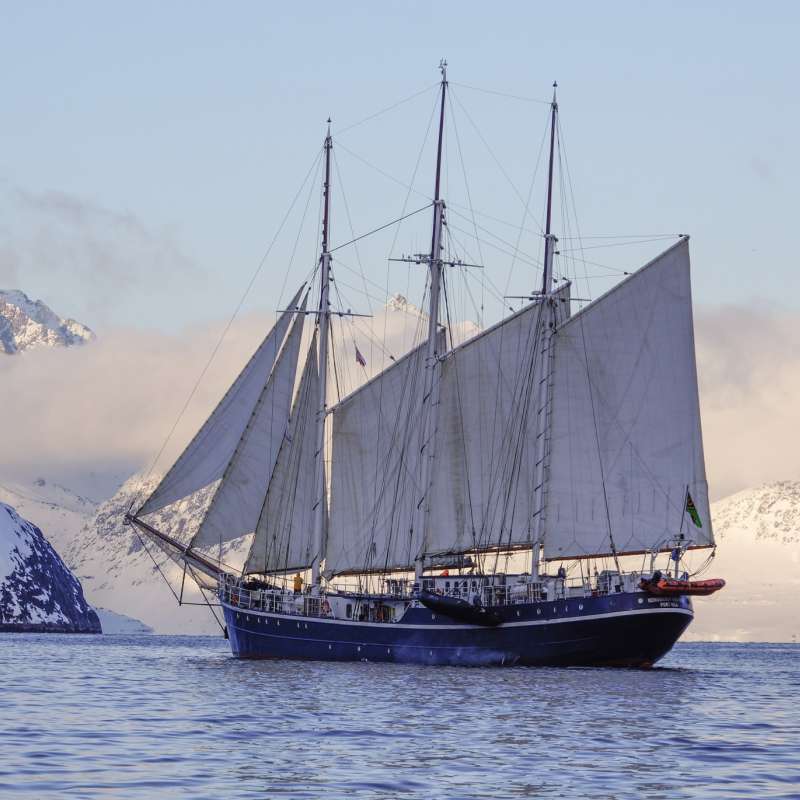Descrizione
Boat
Janssonius is the most advanced Polar Class 6 passenger vessel, exceeding all the latest green requirements of the Polar Code. Build in 2021, measuring 108.6m in length and 17.6m in breadth, with crusing speed at 15 knots.
Janssonius is meeting the latest and highest Lloyd’s Register standards for ice-strengthened cruise ships. Surpassing the requirements of the Polar Code adopted by the International Maritime Organization (IMO). It represents the most flexible, advanced, innovative touring vessel in the polar regions, thoroughly optimized for exploratory voyages that provide you the utmost first-hand contact with the Arctic and Antarctica.
Janssonius uses LED lighting, steam heating, bio-degradable paints and lubricants, and state-of-the-art power management systems that keep fuel consumption and CO2 levels minimal. This means that when you sail aboard Janssonius, you get to enjoy the exotic landscapes and wildlife as much as possible while impacting them as little as possible.
One deck consists of a large observation lounge and separate lecture room, which are reserved for a wide variety of interactive workshops, exhibitions, and performances particular to Janssonius. Though elegantly designed in stylish mid-century modern décor, this vessel holds true to Oceanwide’s distinctive cozy and informal atmosphere.
Janssonius has three separate gangways and a sheltered indoor Zodiac boarding area that can also be used for special outdoor activities, such as kayaking.
Janssonius serve buffet-style breakfasts on board, lunches are often buffets as well. Dinners include a choice of main courses, and these are served at the table. Snacks such as ready-made soups, cookies, and crackers are available 24 hours per day free of charge. Water, coffee, and tea served with all meals, free of charge. Other drinks are available at a reasonable price.
Janssonius carries 72 crew and staff members, including expedition and hotel staff, all of whom will be at your service during your polar expedition trip. Hondius is equipped with two main engines and can reach a maximum speed of 15 knots.
Passengers on a typical voyage range from in their 30s to their 80s, with the majority usually between 45 ― 65. Our expeditions attract independent travelers from around the globe who are characterized by a strong interest in exploring remote regions.
Cabin
Janssonius has 80 guest cabins, it can accommodate up to 170 guests per trip:
All cabins feature ensuite bathroom (with hair dryer, shampoo and shower gel), flatscreen TV (satellite TV system, but reception cannot be guaranteed), desk & chair, telephone and WiFi (supplemented), cabinet, wardrobe, safe deposit box. We advise that you use a softshell suitcase as there is not much space for large suitcases in the cabins.
The power supply is 220 volts, 50 cycles. The wall plugs accommodate two thick round pins like those found in most European countries.
6 Grand Suites with private balcony :
Located on the deck 7, 22 square meters in size. Comes with 1 double bed, sofa, refrigerator, coffee & tea maker, bathrobe, 1 double window and private balcony.
8 Junior Suites :
Located on the deck 7, 20 square meters in size. Comes with 1 double bed, sofa, refrigerator, coffee & tea maker, bathrobe, 1 double window.
8 Superior Cabins :
Located on the deck 6, 20 to 21 square meters in size. Comes with 1 double bed, sofa, refrigerator, coffee & tea maker, bathrobe, 1 double window.
11 Twin Deluxe Cabins :
Located on the deck 6, 19 to 22 square meters in size. Comes with 2 single beds (side by side), sofa, refrigerator, coffee & tea maker, bathrobe, 2 windows.
14 Twin Window Cabins :
Located on the deck 4, 12 to 14 square meters in size. Comes with 2 single beds (side by side), small sofa, 1 window (Please be aware that the view from some windows might be partially obstructed due to the design requirements of the ship).
27 Twin Porthole Cabins :
Located on the deck 3, 12 to 14 square meters in size. Comes with 2 single beds (side by side), small sofa, 2 portholes.
2 Triple Porthole Cabins :
Located on the deck 3, 12 to 14 square meters in size. Comes with 1 upper berth & 2 lower berths, small sofa, 2 portholes.
4 Quadruple Porthole Cabins :
Located on the deck 3, 15 to 16 square meters in size. Comes with 2 upper & lower berths, small sofa, 2 portholes.
Diving
- Polar diving activity is offered as a supplement on select trip.
- Group size: minimum 8, maximum 24 divers per trip.
- 6 divers per dive guide, there are 4 dive guides onboard.
- 1 - 2 dives per day, one in the morning and one in the afternoon.
- Divers must be experienced with cold-water, dry-suit diving.
- A min. 30 logged dives in cold-water, dry-suit diving is required.
- The ability to dive depends on local ice and weather conditions.
- If divers don't meet the necessary experience, they can be excluded, no refund.
- Dives are made from the Zodiac boats, max. depth is around 20 meters.
- Scuba tanks, compressors, weights, diving essentials are provided.
Dive Equipment to bring
- Pressure gauge
- Compass watch
- Knife and torch
- Mask, fins, and snorkel
- Dry suit with hood, two sets of warm underwater garments
- Dry gloves or 7mm wet gloves/mitts adequate for sub-zero waters
- Stabilizing jacket or BC with quick-release capability and sufficient lift capacity
- Two freeze-protected regulators. (We dive with special bottles that have two separate outlets, and we use 12L steel tanks fitted with a Y or H valve configuration and DIN or Yoke (INT) adaptable connections.)
- Do not bring any new equipment you have not tested in the water.
Shore excursions and Zodiac cruises
- Guided shore excursions, walks, wildlife spotting, and Zodiac cruises are included.
- Daily programs will be announced during briefings, displayed around the vessel.
- The planned activities are always subject to change due to local conditions.
- Expeditions cruises are trips that focus on maximum contact with local wildlife.
- For expedition cruises, guests must be able to walk several hours per day.
- For regular cruise, there will be a series of landings, each several hours long.
- For expedition cruises, land 2 or 3 times every day - depends on the program.
- When an activity is cancelled due to weather (or any other) conditions, we will offer an alternative activity when possible. We may also reschedule the activity for another time. If neither option is possible due to local conditions, however, we can offer no refund for the missing activity. This is the unpredictable nature of expedition travel.
What to Pack
- Waterproof trousers and jacket against wind, rain and salt spray.
- Furthermore thermal underwear, fleece jackets, warm gloves and a warm hat.
- A down-jacket, a waterproof jacket and pants (minimum 15,000mm rating).
- Mittens and gloves, Woolen cap, Warm socks, Waterproof backpack etc.
- Sunglasses, Sunscreen SPF 30+, Facial protection.
- Pair of binoculars, Camera and plenty of memory cards/film
- High rubber boots / Neoprene boots will be provided to all guests for all landings.
- Snowshoe walkers should bring mountain boots for comfort, grip and stability.
- Kayaking : Neoprene gloves are best for keeping your hands warm.
- Mountaineers must bring their own mountain boots with sufficient ankle support and stiff sole.
Activities Cost
- Shore base walking : No surcharge for all guests during the cruise
- Hiking : No surcharge. 2-3 hours or longer. Sign up upon reservation
- Snowshoeing : No surcharge. Free use of snowshoes.
- Birdinig : No surcharge. Sign up upon reservation.
- Photo Workshop : No surcharge. Sign up upon reservation.
- Navigational workshop : No surcharge. Everyone can participate.
- Acoustic workshop : No surcharge. Open to all participants.
- Mountaineering : Free of charge during "Basecamp" trips
- Camping : Surcharge needed. Free of charge during "Basecamp" trips
- Diving : Surcharge needed, divers must meet the requirments to apply
- Kayaking : Surcharge needed. Free of charge during "Basecamp" trips
- Ski Mountaineering : Surcharge needed. Need to bring own ski equipment
- During “Basecamp” departure : all offered activities (including camping, kayaking, snowshoe/hiking, mountaineering, photo workshops as well as our standard included shore excursions and zodiac cruises) are free of charge.
The Climate in Antarctica
Antarctica is the coldest and also the windiest continent in the world. The lowest temperature on Earth was recorded in Antarctica. There are three climatic regions in Antarctica:
The interior of the continent: This is the extremely cold area of Antarctica.
The coastal areas: These areas have milder temperatures and much higher precipitation rates.
The Antarctic Peninsula: This is the region which has a warmer and also wetter climate; above freezing temperatures are common in the summer months.
During the summer months temperatures in the Antarctic Peninsula range between -2°C - +5 °C. In the Ross Sea it can get significantly colder with temperatures down to -20°C.
The Aurora Borealis in Arctic
The best time to see the Aurora Borealis is between October and February. In this time, it is guaranteed dark at night when the chance of seeing the northern lights is greatest. Seeing the Northern lights also depends on the weather. During cloudy nights the lights cannot be seen.
Furthermore, not many people know that central Greenland is located at exactly the right latitude for seeing the Aurora Borealis. The fairly long periods of darkness in September make our Greenland expeditions an ideal opportunity to admire this unbelievable phenomenon.
About the Polar bears
There is a chance you will see polar bears in places like Svalbard and Franz Josef Land, but the odds that you will see one during a landing or onshore activity is highly unlikely – and we work hard to keep it that way. Most people who visit the Arctic want to see a polar bear, but it is our top priority to ensure that all wildlife sightings are safe both for our passengers and the wildlife.
Our experienced staff will use their knowledge to find polar bears, ultimately it is in the hands of nature. Our Svalbard and Franz Josef Land voyages offer the best chance of sightings, but we rarely encounter bears in Greenland.
In a few of our Arctic areas of operation, polar bears sightings are fairly common. Though we can obviously never guarantee we’ll see polar bears, these areas are great places to look for them. Our captains, crews, and guides (with help from our passengers) keep a close lookout for polar bears at all of our landing sites, and if we see any, we do not go to shore.
If no bears are spotted, however, our guides will scout the area from our Zodiac boats to make sure no polar bears have escaped notice. Only then will we attempt a landing. During landings in polar bear country, our guides carry powerful rifles in case of the unlikely event of an encounter with a bear that has gone undetected. If we spot a bear, we immediately evacuate and return to the ship.
Photography Workshops
There is no extra charge for participating in our photography workshops, but please book your spot well in advance - preferably three months prior to your departure. The photographers are in high demand, so we need to recruit them early.
You have to bring your own camera gear. Choices in photography equipment are largely matters of personal preference, so there’s no way we can accommodate everyone. You can bring more than just a basic camera if you choose, but keep in mind you may have to carry your gear over long distances.
Embarkation & Disembarkation
Standard embarkation time is between 4PM and 5 PM, but on some voyages we have different embarkation times. Standard disembarkation time is around 9AM, after breakfast, but on some voyages we have different disembarkation times.
Other information
- Min. Age: Children must be at least three years old
- Dive Equipment Rental:Not available, must bring your own
- Dive insurance:Mandatory requirement for all divers
- Wi-Fi Internet :Available with additional cost
- Laundry Service:Available with additional cost
- Massage Service:Not available at the moment
- Payment on board:Cash (EUR/USD) or credit card (Visa, Master)
- Crew Number:72, include 4 dive guides for up to 24 divers/trip.
Itinerari (V.O)
How to book the trip to Antarctica or Arctic?
Step 1 : Choose what you want to do
Polar Diving : Antarctica & Arctic
Destinations: Antarctic Circle, Antarctic Peninsula, Greenland, Svalbard
Highlights : Diving cruises give you access to some of the most scenic dive sites in the polar regions.
Basecamp : Antarctica & Arctic
Destinations: Antarctic Peninsula, Svalbard
Highlights : Basecamp cruises give you the utmost outdoor activities : Kayaking, hiking, snowshoeing, mountaineering, photo workshops, even camping under the Antarctic stars are all options on these incredible cruises.
Mountaineering : Antarctica (Mountaineering) & Arctic (Ski Mountaineering)
Destinations: Antarctic Peninsula, Svalbard
Highlights : Mountaineering cruises will walking for four or more hours over fairly rugged terrain that includes hills and take you into glaciated areas. Usually you get to choose from one of four or five half or full-day mountaineering treks per cruise.
Acoustics Workshop : Antarctica & Arctic
Destinations: Antarctic Circle, Fair Isle, Antarctic Peninsula, Svalbard, Jan Mayen, Falkland Islands, South Georgia
Highlights : You will locate, record, and analyze the enchanting sounds of various polar animals, such as whales, seals, and seabirds by using modern equipment.
Helicopter Tours : Antarctica
Destinations: Ross Sea, Weddell Sea
Highlights : You will take helicopters to get even closer to the heart of untouched wildlife, allowing to set foot onto some of the world's most remote landscapes.
Antarctic Camping : Antarctica
Destinations: Antarctic Peninsula
Highlights : You can settling into your bivouac bag, and sleeping under the Southern Hemisphere stars. We provide the necessary camping gear, including breathable bivouac bags that are wind and waterproof and a lightweight alternative to tents.
Step 2 : Consider what you want to see
In both the Antarctica and Arctic regions :
Blue Whale : Cape Verde, Antarctic Peninsula, Greenland, Svalbard, Jan Mayen, St. Helena, Iceland
Humpback Whale : Lofoten, Antarctic Peninsula, Ross Sea, Weddell Sea, Greenland, Svalbard, Falkland Islands, South Georgia, Ascension Island, St. Helena, Tristan da Cunha, Iceland
Killer Whale : Bouvet Island, Lofoten, Fair Isle, Antarctic Peninsula, Ross Sea, Weddell Sea, Greenland, Svalbard, Falkland Islands, South Georgia, St. Helena, Iceland
Minke Whale : Lofoten, Fair Isle, South Orkney Islands, Antarctic Peninsula, South Shetland Islands, Greenland, Svalbard, Falkland Islands, South Georgia, St. Helena, Iceland
Sperm Whale : Lofoten, Cape Verde, South Orkney Islands, Antarctic Peninsula, South Shetland Islands, Greenland, Svalbard, Falkland Islands, South Georgia, Ascension Island, St. Helena, Tristan da Cunha, Iceland
Fin Whale : Bouvet Island, Lofoten, Antarctic Peninsula, Ross Sea, Weddell Sea, Greenland, Svalbard, Falkland Islands, South Georgia, St. Helena, Tristan da Cunha, Iceland
In the Antarctica region :
Emperor Penguin : Ross Sea, Weddell Sea
King Penguin : Falkland Islands, South Georgia
Yellow-eyed Penguin : Ross Sea
Magellanic Penguin : Falkland Islands
Rockhopper Penguin : Falkland Islands, Tristan da Cunha
Adelie Penguin : Antarctic Circle, South Orkney Islands, Antarctic Peninsula, Ross Sea, Weddell Sea
Gentoo Penguin : Antarctic Circle, South Orkney Islands, Antarctic Peninsula, South Shetland Islands, Ross Sea, Weddell Sea, Falkland Islands, South Georgia
Macaroni Penguin : Bouvet Island, South Orkney Islands, Antarctic Peninsula, South Shetland Islands, Falkland Islands, South Georgia
Antarctic Fur Seal : Falkland Islands, South Georgia, Tristan da Cunha
Weddell Seal : Bouvet Island, Antarctic Peninsula, Ross Sea, Weddell Sea, South Georgia
Crabeater Seal : Antarctic Circle, Antarctic Peninsula, South Shetland Islands, Ross Sea, Weddell Sea
Leopard Seal : Bouvet Island, Antarctic Peninsula, Ross Sea, Weddell Sea, Falkland Islands, South Georgia
Southern elephant Seal : Bouvet Island, South Orkney Islands, Antarctic Peninsula, South Shetland Islands, Ross Sea, Falkland Islands, South Georgia, Tristan da Cunha
King Cormorants : South Orkney Islands, Antarctic Peninsula, South Shetland Islands, Falkland Islands, South Georgia
In the Arctic region :
Polar Bear : Greenland, Svalbard, Franz Josef Land
Walrus : Greenland, Svalbard, Franz Josef Land
Musk Ox : Greenland
Svalbard Reindeer : Svalbard
Beluga Whale : Greenland, Svalbard (Arctic and Sub-Arctic)
Bowhead Whale : Greenland, Svalbard, Franz Josef Land
Narwhal : Greenland
Grey Seal : Fair Isle
Bearded Seal : Greenland, Svalbard, Franz Josef Land
Harp seal or saddleback seal : Greenland, Svalbard, Franz Josef Land
Arctic Fox : Bear Island, Greenland, Svalbard, Iceland
Arctic Hare : Greenland
Barnacle Goose : Bear Island, Greenland, Svalbard
Step 3 : Tell us
Tell us about all the things you would like to do and see during your Antarctica or Arctic trip. We will then provide you the cruises that is matching with your interests and available for booking, and provide you all the informations you need, plus the day to day itineraries.
Desitanions in Antarctica
South Georgia
The island is also called an Antarctic Oasis because of the huge numbers of penguins and seals that breed here. The marine ecosystem is considered one of the densest examples of biodiversity in the world. Visitors can spot seals on both the land and in the waters, and a variety of whales pass through the area.
Antarctic Peninsula
Here it continues as a mainly sub-marine ridge, the Scotia Ridge, until it comes above sea-level at the northern tip of the Antarctic Peninsula. The peninsula consists of an 800 kilometres (500 mile) long mountain chain, the highest peaks rising to approximately 2,800 metres (9,186 feet), and numerous off-lying islands. The Peninsula offers the most dramatic scenery and biggest variety of wildlife in Antarctica. Visitors are easily overcome by sensory overload by the huge amount of ice-bergs.
Antarctic Circle
This border, that is located at Latitude 66° 33′ South, marks the Antarctic Territory according to one of the definitions. The Antarctic Circle experiences a period of 24 hours where the Sun is above the horizon during the summer solscice on 21st December. The reason for this phenomenon is that the axis of the earth is tilted by 23.5 degrees.
Falkland Islands
The Falklands (Islas Malvinas) offer a broad variety of spectacular wildlife. There are over 60 different species of bird breeding on the Falklands, largely dependent on the abundance of marine life. Over 80% of the world’s population of black-browed albatross can be found on the islands. The most famous of the Falklands’ bird life are the penguins – the Magellanic, Gentoo, Rockhopper and King Penguin. The islands are considered the most important world site for Rockhopper Penguins. Fur Seals, Elephant Seals and Sea Lions can all be found breeding on the islands’ many shores. The surrounding oceans are alive with mammal life. The waters host numerous porpoises and dolphins, and Sei, Sperm, and Killer Whales can be found nearby.
Weddell Sea
The Weddell Sea is frequented by a large number of Orcas, Humpback, and Minke Whales as well as Leopard, Weddell, and Crabeater Seals. The area is also home to a large number of penguins, namely the Adelie Penguins - who have a colony of more than 100,000 breeding pairs - which nest on Paulet Island. Recently a colony of Emperor Penguins was also found nearby on Snowhill Island.
Ross Sea
The Ross Sea is a giant bay found south by south-east from New Zealand. Home of at least 10 species of mammal, 6 dozen species of birds, nearly a hundred types of fish, and around 1000 examples of invertebrate species. The Ross Sea is one of the few expanses of salt water that has been left (relatively) free of human impact. Passengers aboard one of our Ross Sea Journeys will travel along the southern parts of the Antarctic Peninsula, Peter I Island, the Bellingshausen and Amundsen Seas into the Ross Sea. Visiting the Ross Ice-shelf, Dry Valleys, McMurdo Station, Campbell Island and the historic huts of discovery voyagers Scott and Shackleton. Ortelius will be equipped with helicopters. Be prepared for an unforgettable memory.
South Shetland Islands
The archipelago consists of 11 major islands and numerous smaller ones. They are mainly mountainous and more than 80% glaciated. The islands are of volcanic origin. Although the islands might have been sighted before, the first recorded sighting is that of William Smith, a British sailor whose ship was blown off course while rounding Cape Horn in 1819. Soon after, seal hunters frequented the islands in search of Fur Seals.
South Orkney Islands
They were named, together with the South Shetland Islands, after the islands in northern Scotland by the Scottish sealers that frequented the area. The islands were discovered only in 1821 when they were sighted by the respectively British and American sealers George Powell and Nathaniel Palmer. The islands consist mainly of rock and ice (85 % is glaciated), with little vegetation. Argentina and the United Kingdom have scientific stations on the islands, the Orcadas Station and Signy Station.
Tristan da Cunha
Tristan da Cunha is a very special place, an active volcano on which people live, located in the middle of the South Atlantic Ocean. The island is often called the most remote inhabited island of the world but is also famous for its specific Tristan culture, its natural beauty and the breeding grounds for Northern Rockhopper Penguins and millions of sea-birds.
Ascension Island
Home of the world-famous green sea turtles. The few visitors were deterred from settling due to the aridity. It was eventually occupied in 1815 by the British who wished to prevent any possible use by the French for an attempt to release Napoleon from St. Helena.
St. Helena
Cruise into history. Visit the island of Napoleon Bonaparte, exiled to St. Helena from 1815 until his death in 1821. Because of its situation, offering a convenient refreshment station, there were continual efforts made by the Portuguese, the Dutch and the English to secure it.
Cape Verde
The islands are all different in landscape and some even in climate. The island of Fogo is volcanically the most active of all the islands. Cape Verde is located at Latitude 27º North, which means the archipelago is situated within the Tropics. The climate on Cape Verde is milder though, less hot than the climate of the African mainland due to the fact that the islands are surrounded by ocean. The summer temperatures range from 25º to 29º C (77º to 84ºF). The islands see little rain and are therefore dry to very dry.
Desitanions in Arctic
Greenland
See the Earth the way it once was. Greenland is dominated by the second largest ice-sheet of the world. Although huge in size it is inhabited by less than a 100.000 people. The majority of the Greenlandic population is formed by Inuit, the indigenous people of the Arctic. Despite the restricted access to land due to the ice sheet Greenland sports a diverse array of wildlife. Many land mammals enjoy the northern and eastern shores of the island where human populations are few and far between. The waters around Greenland are alive with belugas, blues, fins, Greenland whales (a.k.a. bowhead whales), minkes, narwhals, and sperm whales.
Jan Mayen
Topped by the 2,277-meter high (7,470 feet) stratovolcano, Mount Beerenberg, the largely glaciated Norwegian island of Jan Mayen provides visitors staggeringly scenic views as well as the chance to spot marine life in the food-rich waters offshore. Jan Mayen is an island of breath-taking beauty and mystique and is dominated by the active volcano Mt Beerenberg.
The weather around Jan Mayen, however, can make landings tricky. Heavy rain, high winds, and fog are all likely here, though the temperatures are comparable to our other Arctic areas: When we visit Jan Mayen in June, the average temperature is around 2 to 3°C (36 to 37°F). But despite the strong chance of inclement weather, occasionally the sun breaks through and provides Jan Mayen visitors some of the most ruggedly beautiful photo opportunities found in the Arctic. From the slopes of this 2300 meters high volcano impressive glaciers spill into the sea. The food rich waters that surround the island offer very good whale sighting opportunities.
The weather around Jan Mayen is often not so good: it is said the weather is foul for 362 days of the year. There may be heavy rain, wind and fog but then, soon after, the sun may break through and the air becomes clear. In June, when our ships visit Jan Mayen, the average temperature is around 2º to 3ºC (36º to 37ºF).
Svalbard
“Spitsbergen” is Dutch - spits meaning “pointed” and bergen meaning “mountains.” It was so named in 1596 by Dutch Arctic explorer Willem Barentsz. It took some time for the name to catch on – English whalers would refer to the archipelago as Greenland until the late 1780s. The Norwegian name is Svalbard. T
ouched by three seas – The Norwegian Sea, the Greenland Sea, and the Arctic Ocean – Spitsbergen is the largest and only permanently populated island of the Svalbard archipelago of northern Norway. Its rugged mountains and rolling tundra offer plenty of opportunities for hiking and snowshoeing. Spitsbergen is by far the largest wilderness area of Europe and offers some of the finest scenery and wildlife experiences in the world.
Franz Josef Land
Part of the Russian National Park, the archipelago of Franz Josef Land consists of 192 largely glaciated islands.
Altro
| Destinazioni | L'Artico, L'Antartide |
|---|---|
| Disponibili a bordo | Watersport equipment, Camera Station, Wi-Fi, Laundry, Elicotteri |
| Lingue parlate a bordo | English, French, German |
Orari & percorsi
| Data | Durata | Destinazione | Partenza - Arrivo | Prezzo | |
|---|---|---|---|---|---|
| 20/04/2024 al 29/04/2024 | 9 notti | L'Antartide | St Helena - Praia | Da $4,000.00 | Dettaglio |
PREZZI E CONDIZIONI
| Destinazione | Durata | Cabin | Prezzo |
|---|---|---|---|
| L'Antartide | 9 notti | Quad | From $4,000.00 |
| L'Antartide | 9 notti | Triple | From $5,000.00 |
| L'Antartide | 9 notti | Twin | From $5,600.00 |
| L'Antartide | 9 notti | Twin window | From $6,050.00 |
| L'Antartide | 9 notti | Twin Deluxe | From $6,400.00 |
| L'Antartide | 9 notti | Superior | From $7,300.00 |
| L'Antartide | 9 notti | Junior Suite | From $7,750.00 |
| L'Antartide | 9 notti | Grand Suite | From $9,000.00 |
Incluso
- Trasferimenti dall'aeroporto e/o dall'hotel allo yacht
- Tasse del parco marino / Tasse portuali
- IVA e imposte locali
- Pensione intera, Snack / Spuntini
- Acqua minerale, Tè e caffè
- Servizio di guida naturalistica
- Land excursions and activities throughout the trip
- Boat accident insurance
- Teli cabina e set di cortesia
- Servizio di pulizia della cabina
Non incluso
- Domestic flights in destination country
- Supplemento carburante
- Bevande alcoliche
- Bibita analcolica
- Attività subacquea (incl. Cilindri, cinghia e pesi)
- Dive guide service
- Uso di Kayak e/o SUP
- Assicurazione subacquea (requisito obbligatorio)
- Travel insurance (trip cancellation insurance)
- Wi-Fi
- Mancia dell'equipaggio
INFORMAZIONI UTILI
[empty]
